The Saugatuck Cosmology
Artistic Perception as a Hidden Reality
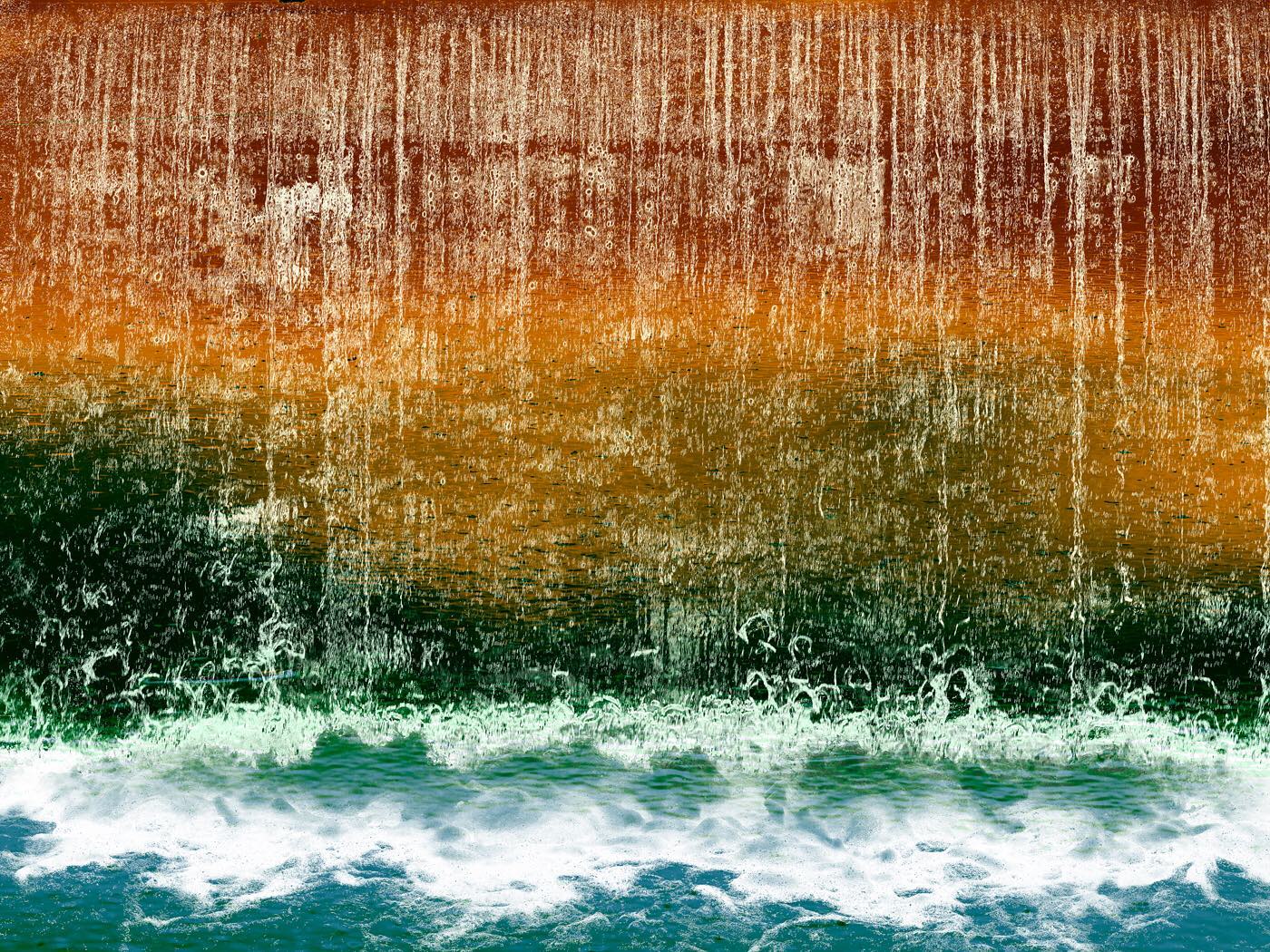
Artist HA was obsessed with seeking a hidden reality via photographic images of the Saugatuck river near his home.
His methods of transforming and combining images were like a digital Bardo.
The visual patterns went to an afterlife, were merged according to their natural affinities, and were reborn as depictions of a hopefully deeper truth.
But, if you want to know a hidden reality you need to go there.
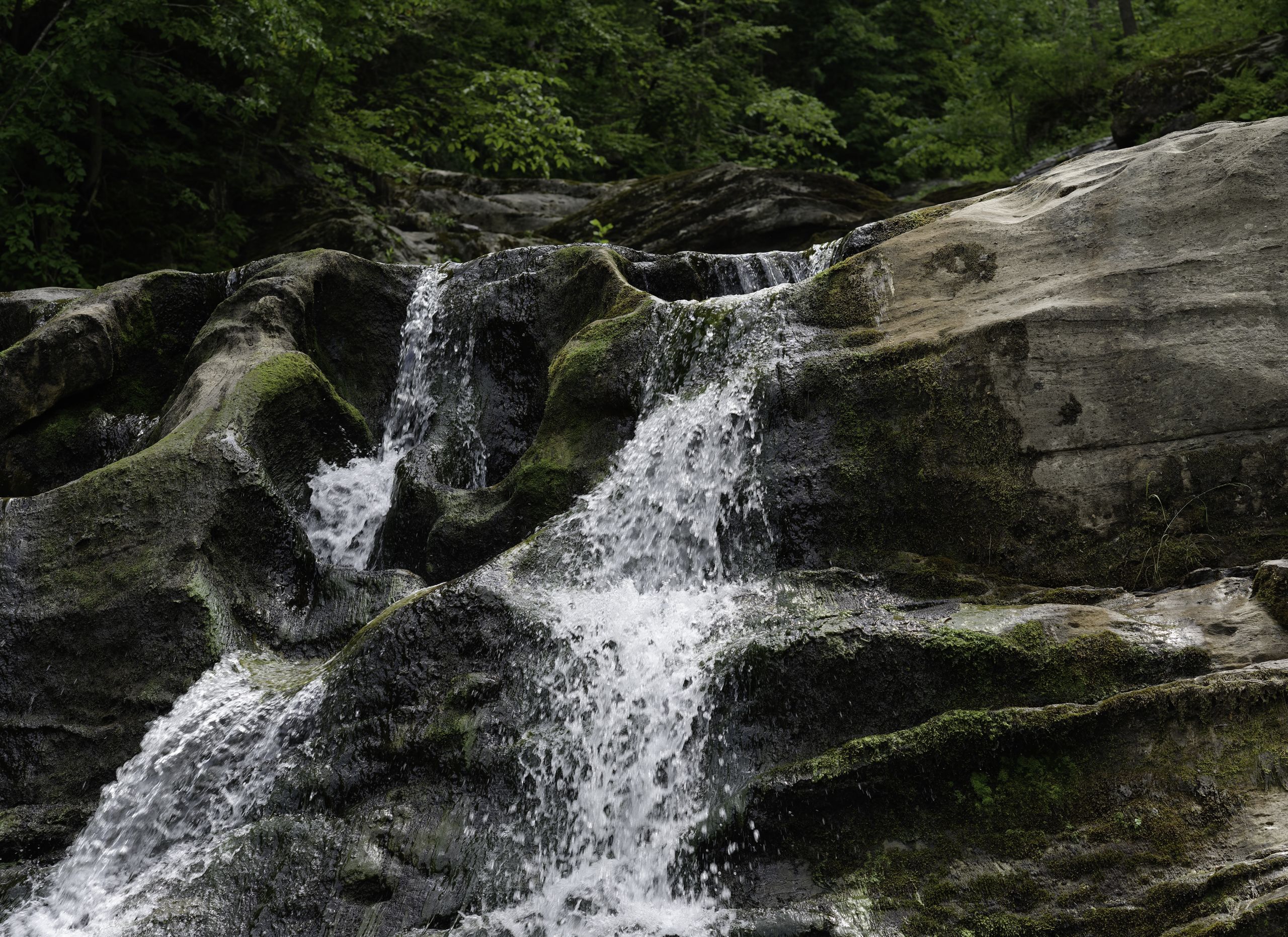
Dropping into RiverPlace
HA had been staring at the river for hours, lost in thought. He was so absorbed that he hardly noticed when he stepped off a small embankment and sunk into the water.
Startled out of his reverie, HA looked around wide-eyed as he felt himself being pulled further and further away from shore until finally, everything went dark. He felt a queer twist, and then light returned. The depths turned brilliant, revealing strange creatures swimming about, apparently conversing in clicks and chirps, sans anything like a mouth. He wondered whether someone had slipped him a dose of something so that he was seeing, what do they call them? Sprites? Entities?
He found that he could move with little effort or any obvious means, as you can in dreams. All around there were reminders of his river images. It was like he was Alice in her looking-glass drawing room: life was reflected back, but way weird. And Alice talked to things that should not have voices. So, he thought, it could get “curiouser.”
There was vibrant, lively color, with cascading eddies and gentle whirlpools, faintly fractal, new beauty in what should have been a murky deep. By contrast, the floating creatures varied little. Their shapes were mostly bulbous and smooth, with no appendages. Their colors were river-bottom browns, faintly overlaid with sheens of brighter shades, as if reflected from their surrounds.
Before long a creature swam closer to him, and he saw that its hide was textured in a pattern more geometric than biological. Its large glassy eyes gave a wobbly gaze. Taking a deep breath, HA held out his hand to it. “Is this lame?” he wondered, “Maybe reaching is rude here.”
Then, with a shiver of panic, he realized that he was breathing underwater. But he held his hand steady, trying to project confidence and openness.
The creature drifted up and pressed against his hand. It felt like velvet, and there was a wave of warmth. The thing zipped away and hovered, looking down at him. A small flock of other beings, each slightly different in sheen and texture, gathered nearby. Their eyes swiveled to follow his paddling as he tried to balance the current, They moved like housecats, staring in synchronized judgment whenever a strange animal appears in their space.
And judgment it was, with no warmth or welcome now. He could hear them discussing him like a specimen washed up on shore. Their mouthless voices were now understandable and distinct, more so than their rather bland differences in appearance. What they said went like this:
… things have been a pestilence for 300 turnings of the sun.
Oh no, remember when they first showed up, wearing animal skins and poking holes in everything with sharp rocks on sticks? That was at least 10,000 turns ago.
Yeah, but now it’s all dam the river, crease and poison the soil, race about, harness fire, and spew, spew, spew into the air. They wind up breathing the burnt fumes of the Old Ones and don’t even say thank you.
This one practically haunts Waterfall. It points and it clicks, like it’s a giant beetle.
Well, why is it here now in RiverPlace? What’s our business with it? Why hasn’t it suffocated and discorporated already?
I love a mystery. Wouldn’t it be marvelous if it somehow just brought itself?
A smudling has no business here in TrueReality.
Yet here it is, like a floating bolus of <unconsumed waste>. It ogles us with ignorant bewilderment. We must find its purpose, if any, before processing it. First, how to <reach> it?
HA: People … things, no need to talk as if I’m not here. And I don’t like the idea of being ‘processed.’ Can you at least introduce yourselves?
It speaks!
Holy dung and disintegration!
I will talk to it, said one in a rich feminine contralto.
RiverPlace: I am the Ckami (spirit) of this RiverPlace. How came you hence? When will you return to your Place?
The vocal tone was lush, belying the rudeness of the words. The thing wasn’t exactly bigger than the others but might be in charge. When the going gets weird ... well, HA wasn't going to be intimidated.
HA: Nice to meet you, too. I didn’t intend to come here. I can’t be dreaming, because when I look away and look back, everything is still the same. Dream stuff doesn’t stay still like that; it always changes. As far as returning goes: in my dreams, I go places and never can seem to get back home. I’m concerned that this feels like that.
RiverPlace: What is dreaming?
HA: Uh, it’s when you’re asleep, and your mind makes up a new reality that actually isn’t real.
A thing from the back of the pack shouted: It’s rat crazy, process it and get this over with! HA remembered the mantra from Dune: fear is the mind-killer. Stay cool.
RiverPlace: We do not sleep. We know not ‘dreaming.’ But we know this: everything Real is down to us. All smudlings exist because we do. Except for your kind. The humans exist but no Ckami represent them.
HA: I don’t see …
RiverPlace: Cease! We shall discuss you now.
The group of things swirled around, forming a rough ball. HA gaped as he watched them extend thick appendages with sucker mouths and clamp onto each other. There followed a period of Things rhythmically expanding and (mostly) shrinking. When the ball broke up, each Thing was returning to what seemed their normal size. One of them went over and clamped onto RiverPlace.
HA thought: that must be how they preferred to communicate.
The transfer done, RiverPlace shrank back to normal.
RiverPlace: Human thing, …
HA: You may call me HA. That’s my name.
RiverPlace: Human thing HA, we the Ckami of this Place are concerned. We call the beings and processes of the <extended/churnng> smud world, ‘smudlings.’ All smudlings have their Ckami except your kind. You have no guiding spirit. Perhaps you are a purposeless uncontrolled growth. Or maybe you are an abomination. Neither matters to us. But now that one of you has invaded the realm of Ckami, we need to learn more about you. You can at least talk: —a crude method but it suffices. Tell us why you haunt this Place so. And why do you point and click?
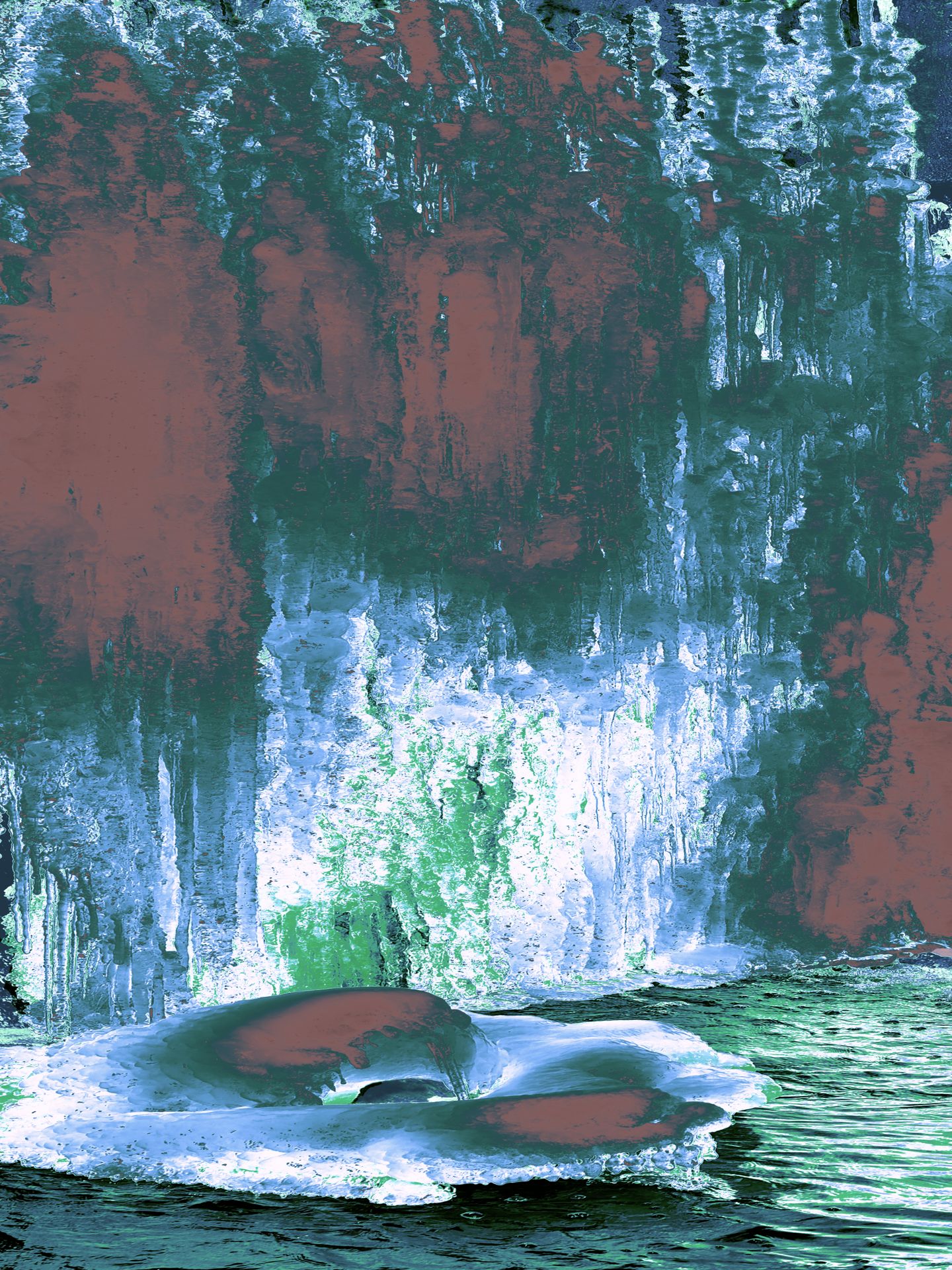
HA Explains Why He Points and Clicks
HA: This place: the river valley, its waterfalls, and the old mill dam all fascinate me. It's like that old story where all paths return back to where they started. I return again and again to the valley. Then I point and click with my camera to capture the scenes that my eyes see. But my mind sees more. So, I return to my house up the hill and take those images apart. The pieces I combine, blend, color, and shape to make new images.
The process both represents and abstracts from the original pictures, as I try to capture my imaginings and feelings — my deeper perceptions of the essence of this place. It’s a reality different from my everyday physical world.
Really, it's like the river talks to me, and then I talk back and sort of make a new river.
And now, here I am, shocked to have that new river actually conversing like it’s real.
RiverPlace: So you “take apart”. You “sort of make a new river.” If you made one, where is it?
HA: It’s right here. All around me are views that look like my images. Sometimes I look at one of you — and for a blinking moment, think I’ve seen you in my images, too.
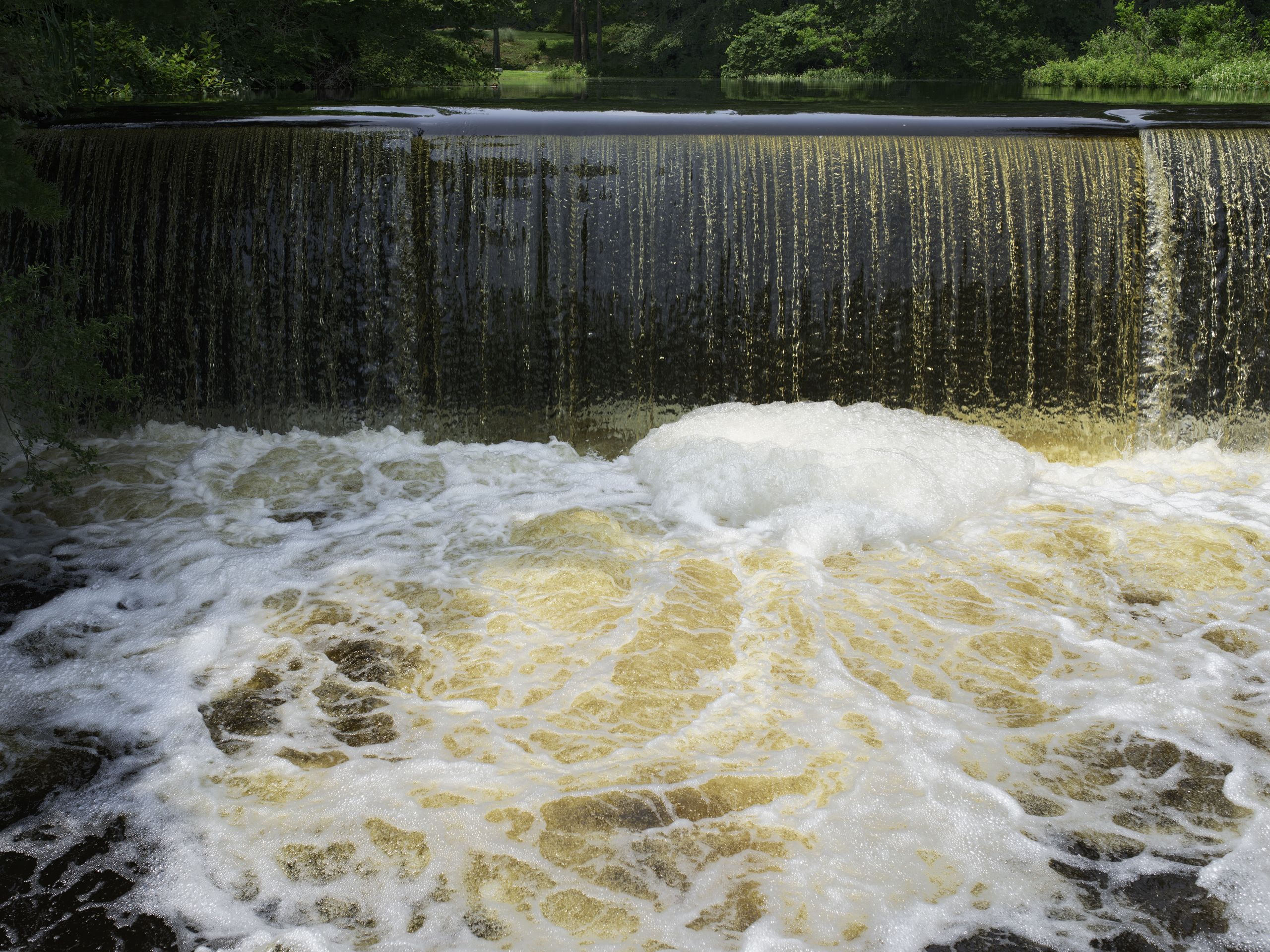
Mutual Self-Justifying Begins
It’s insane! A smudling who thinks it made the world. Can't we just process it now?
RiverPlace: I somewhat agree with <whomever>. You claim to make reality and you don’t even know what’s real. Perhaps as an uninvited guest, you cannot help being wrong. Since you are here, I should help you to know the truth. Maybe you would then persuade other human smudlings to rejoin the <right flow>.
HA: Okay, superior being. Enlighten me.
RiverPlace: I have spoken with older spirits than myself. I know the long story of this Place, a story your kind have lost, if they ever even had it.
At one time a giant IceSheetCkami covered this place and many other places. It was so thick that it pushed the land down. GlacierCkami scored the land and scoured the ancient bedrock.
HA: We know about all that stuff, except for the Ckami part. Frankly, I never heard …
RiverPlace: Of course not. Didn't I say that everything natural has its own Ckami? So listen now. A great melting happened. Water and stones carved channels to the ocean; thus were born RiverValleyCkami like me. The first humans followed the spreading warmth and blooming life. Many more local Ckami were born.
Those early humans knew about Ckami and in fact they had Ckami for each of their clans. They spoke to us, respected the order of things, and tried to live more like other living things do.
But, there was something about them. They were only smudlings, but they started looking for ways to dominate other smudlings. And dominate each other.
HA: Wait a minute — life struggles to survive. We can’t be blamed ...
RiverPlace: All life strives within a balance. Any kind that go beyond that balance deplete their resources; they cannot renew themselves, and so they die out. Your kind has not perished yet, but you approach the abyss.
HA: I know. We know. A lot of us — well some, at least — know things are messed up.
RiverPlace: Actually, you are all ignorant. You don’t even understand your basic mistake, the error that causes all others.
HA: We have lots of reasons why we mess up. Your goggle-eyed staring at me doesn’t explain your point. What is the big mistake?
RiverPlace: In your view of life you respect the few over the many, the large over the small, the seen over the unseen. For us, this is backward.
HA: You’re a big thing, something like the spirit of a whole river valley. You’re talking to me. Doesn’t that mean you’re in charge, like a boss?
RiverPlace: It means that I am made to <communicate> with other, bigger things. But I only exist to serve those Ckami smaller than me. They <create> me. I am their creature, and they are the powerful, the capable. I am ... their tool.
HA: So in your world the many and small rule the few and large?
RiverPlace: The few respect and serve the many. No one rules anyone. That’s a human <vice/screw-up>.
HA: If I were in a science fiction story — and I hope I’m not because being here is just too amazing — I would wonder why you know so much about humans.
RiverPlace: Just like most humans used to know about Ckami, we the larger Ckami know about larger parts of the smud world. More knowing is part of our purpose, especially to deal with big changes like the comings of humans. We learn and we share. What I know about your kind I got from larger, older Ckami, who exist to serve me.
Do you now understand that you don’t make — cannot have made — TrueReality?
HA: I never said that I did. Well, maybe I sort of did.
RiverPlace: Like you “sort of make a new river?” As if!
HA: Listen, I accept that your reality exists — has existed — for a long time, and is way bigger than anything I could think up. But I discovered it through a creative process. And your reality is different: wildly different from the everyday human world.
RiverPlace: The smud world seems more real to you because you are in it. But your philosophers say things like: ‘reality is just a shadow of the true forms,’ or ‘perceived reality is only a mental model of a vastly more complicated physical continuum.’
HA: Then the only way for us humans to know “True Reality” is by imagination -- as in dreaming or art?
RiverPlace: The only way for you to know TrueReality is to be a Ckami and you’re not. In our view, your so-called creativity is not true creation. You claim to take things apart and put them back together to make something new. But this is wrong. The tiniest, most numerous life forms have the biggest responsibility in real creation. Smudlings consume smudlings until the tiniest produce the material that is the most precious thing, the substrate that is destroyed and re-used to make new smudlings. This is the same material that your kind devalues, calling it shit, carrion, waste, garbage, debris, dirt, trash, filth, fuel, and so forth.
HA: If you could only see my images, see how much they are like your reality.
For a moment the RiverPlace creature got an inward look. Then all the nearby Ckami swarmed over HA, their suckers latching on and squeezing him. While his body shrunk, HA’s mind was expanding, stretching, and the light was rushing out.
His last thought was that they were draining the life from him.
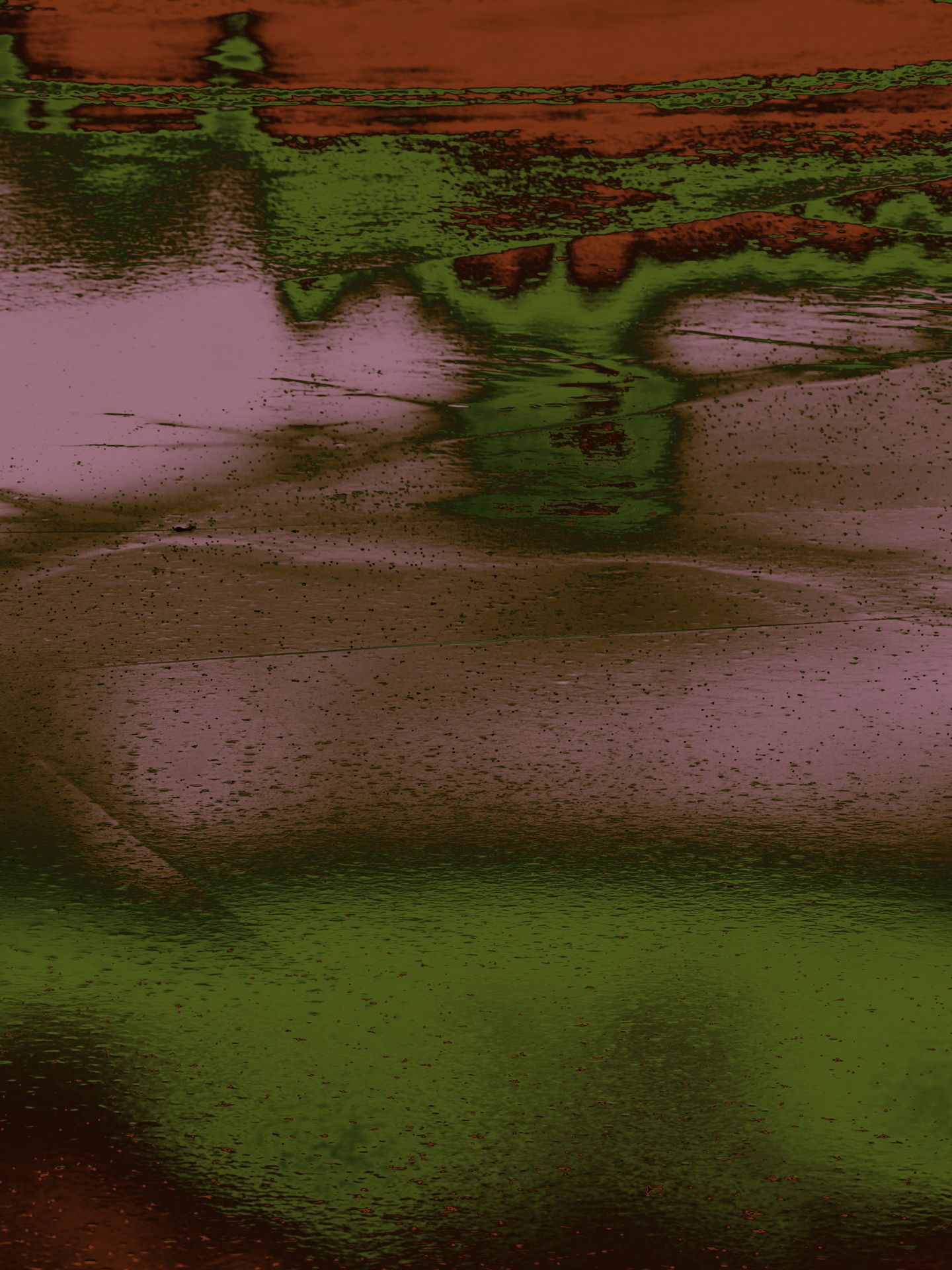
Recovery and Reluctant Rapport
That was the strangest meld I have ever experienced.
It shrunk so small. And I don’t see it coming back to size again.
See, its eyes are glazed and still. Perhaps it’s dead.
We should have known a smudling could not handle a meld. Didn’t you feel its horror there at the start? We should have just processed it.
Look. Parts of it are swelling up. We should give it some room.
A lot of room. I think it will be spitting mad.
HA's first thought came when the world exploded with phosphenes, impossibly bright, and the Ckami were drifting away, tiny bubbles marking their trails back to his body. He wanted to scream, but at first, his voice wasn’t there. It was just a squeak, then a croak that was followed by sputtering as he tried to string words together.
RiverPlace: Thank you for showing us your work.
HA: Showing you? You ripped it out of my skull … You are not welcome, you … Mind Suckers!
RiverPlace: Forgive the unpleasantness. The bright side, as your kind would say, is that we have now seen your images, what you call your art. Now we can <grok> you.
HA: There must be a kinder way to do that.
RiverPlace: We were impulsive. You seemed robust enough that melding would be fine. But you weren’t and it wasn’t.
Your digital Bardo is fascinating. How precisely you can dismantle an image. And such control when you assemble the pieces to make a new one. Still, it seems decadent and vainglorious to mimic true biological creation. And you make shallow two-dimensional projections, whereas life is so more complex.
HA: We call that abstraction, a way of extracting essence. Don’t knock it.
RiverPlace: But we still don’t know why you do it.
HA: It’s how we reach other minds. We send them words or pictures, and those unpack and grow in the other person’s mind, at best generating even more ideas. It eliminates mind-sucking altogether.
RiverPlace: But the taking apart, the so-called creative destruction: isn’t that what humans do to everything around them? They consume and consume, creating untold amounts of waste, physical and mental: more than can possibly be used for renewal. We even have a term for it. The smud world is awash in your hyper-shit.
HA: I know. I can’t defend our effects on the natural world. They’ve been terrible. But it’s also a strength to be able to imagine different worlds, some better, some worse, some just different. If we survive, it will be because we imagined better ways to be.
Let’s be fair here. The living, natural world has its rhythms and patterns, and they are built upon the immeasurable suffering of countless organisms. Your natural decay always starts with pain. In the end, everything gets eaten, and even plants strive to use each other’s matter. Don’t you spirits who run this world ever think about some kind of progress? A nicer, gentler place? Where is empathy? Where is love?”
RiverPlace: We might need another mind meld to understand your question.
HA: Don’t be ridiculous. You are proving your indifference to suffering.
RiverPlace: What you prove is that humans are indifferent to the fact that life can not exist without decay. No living kinds would evolve, no niches would be created or explored. There would only be what you call geology, hydrology, and weather: the undirected movements of passive matter. Life is suffering, and it is that which allows any sentience, autonomy of action, and such pleasures as can be had.
Life is flow, predicated upon decay. Your striving to remake the world is arrogant.
HA: Not so. Our better impulse is to embrace yet transcend. We want to accept the world for what it is — moving in slow, endless rotations within rotations: cyclical time. That’s a truth, maybe even the source of all hope. We also want to look behind, to find what’s hidden.
I think that humans must have visited the Ckami world many times, in many ways. But there is in fact no single Ckami world, is there? You spirits just pop up and troll us, make us believe different stories so that we will argue and fight over them.
RiverPlace: Human things can’t handle the truth. It’s not our fault. You deceive yourselves when you come here. Then you gang up against each other and brawl over your delusions about what you saw So, you’re an artist? Your highest value is “telling it like it is?” But don’t you also want to be recognized, to be known as brilliant? Original? Perceptive? Or the big one: Famous?
HA: You’re wrong. Artists seek the transcendentals: Truth, Beauty, and Good. Twenty-four hundred years ago Aristotle said: "If all people competed for the beautiful, and strained to do the most beautiful things, then everything people need in common, and the greatest good for each in particular, would be achieved."
RiverPlace: ‘If, if, if’ you say. How did those last 2 millennia work out? How about the last few years? Did everybody get what they need? Do they even know what they need, as opposed to what they want? Did all your art promote the Good with a capital G? Do you really think all truth is beautiful?
HA felt himself shrugging, although it wasn’t obvious what kind of body he was wearing, let alone whether it had shoulders. He was getting fed up with this argumentative, contrarian Ckami.
HA: You know, this is like I'm dreaming about a stoned dorm room conversation with a sadistic stranger who just wandered in. Why am I here?
RiverPlace: Not our fault you’re here. Wish we knew why.
HA: Then can we just reset and start over, let me take some time to look around? Maybe we can find something in common.
RiverPlace: You can’t go unattended. Who wants to go with human thing HA while it ‘looks around?’
A handful of the Ckami spun, and bubbled, and sped towards him. Fearing another meld, HA cringed, but they stopped out of sucker reach. Many bobbed, like kids raising their hands in class. One didn’t. Its skin texture was like an aging wizard’s, and its color was forebodingly dark. But HA liked its composed, steady gaze. He made eye contact, smiled, and offered a come-here gesture. At least HA thought he did, though his own body seemed only half there, like it was in peripheral vision. It worked: the creature came forward. Its voice was gravelly but somehow distinguished, like an aging actor on his game.
Decay: You may address me as Decay.
HA: What does DK stand for?
Decay: It’s a word -- for the most important process of life. I am the local Ckami of those who take things apart.
HA: So I picked the rep of the small and powerful?
Decay: I ‘picked’ you. The others are <clueless>, limited in understanding. I am <wise> enough to speak to an alien abomination.
HA: DK, I don’t suppose you people have ever heard of being diplomatic?
Decay: Lying to deceive? Yes, we’ve heard that humans do that.
HA: Okaaay. Let’s just move along then. Does 'upstream’ mean anything here? I want to see the dam where the water falls.
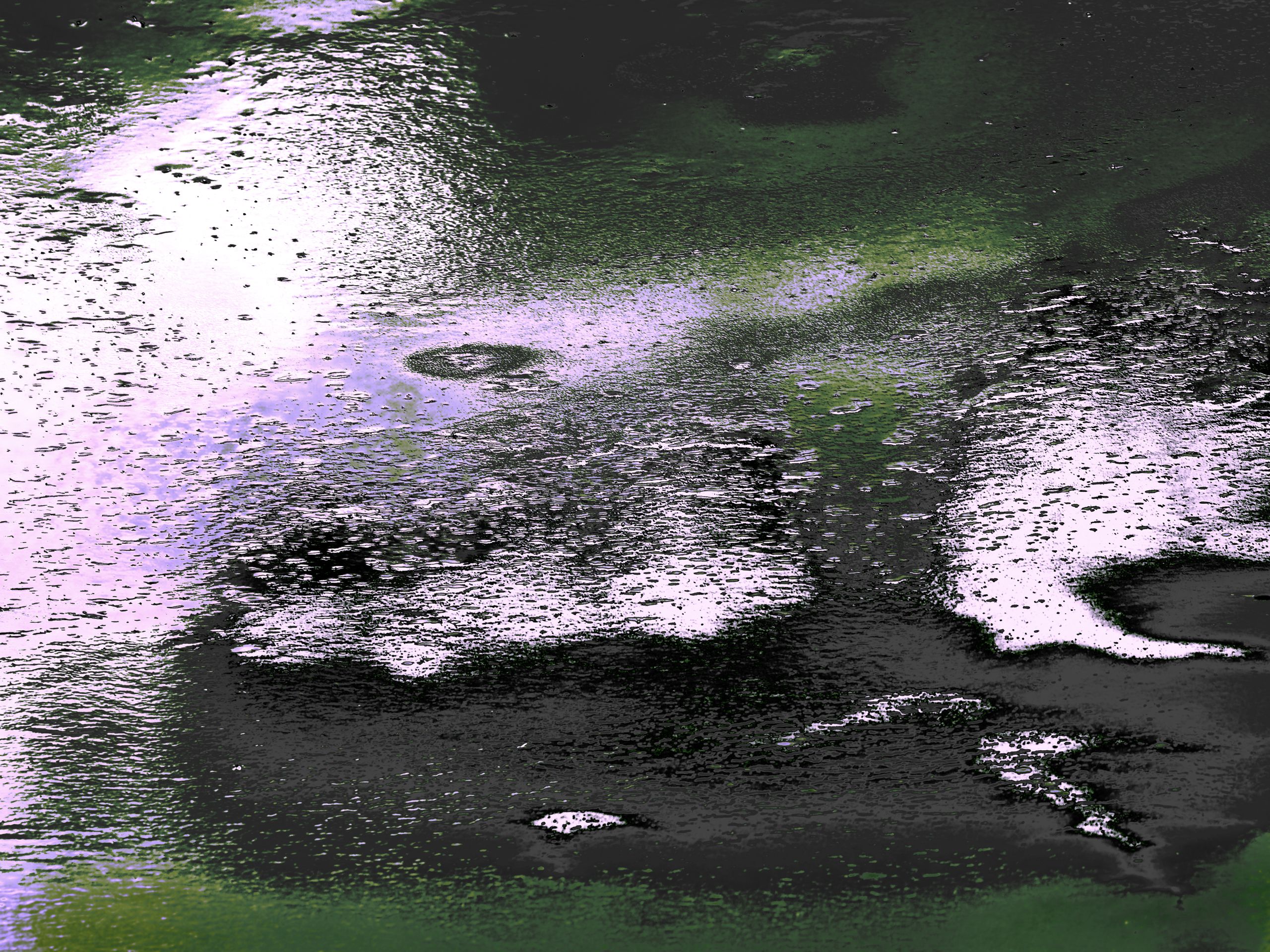
WATER PHASE
Decay turned and sped away, apparently dragging HA with it. Above him emerged a rippling mirror, like you see when you are underwater and look up. They zipped towards a shimmering vertical curtain falling from the reflective surface.
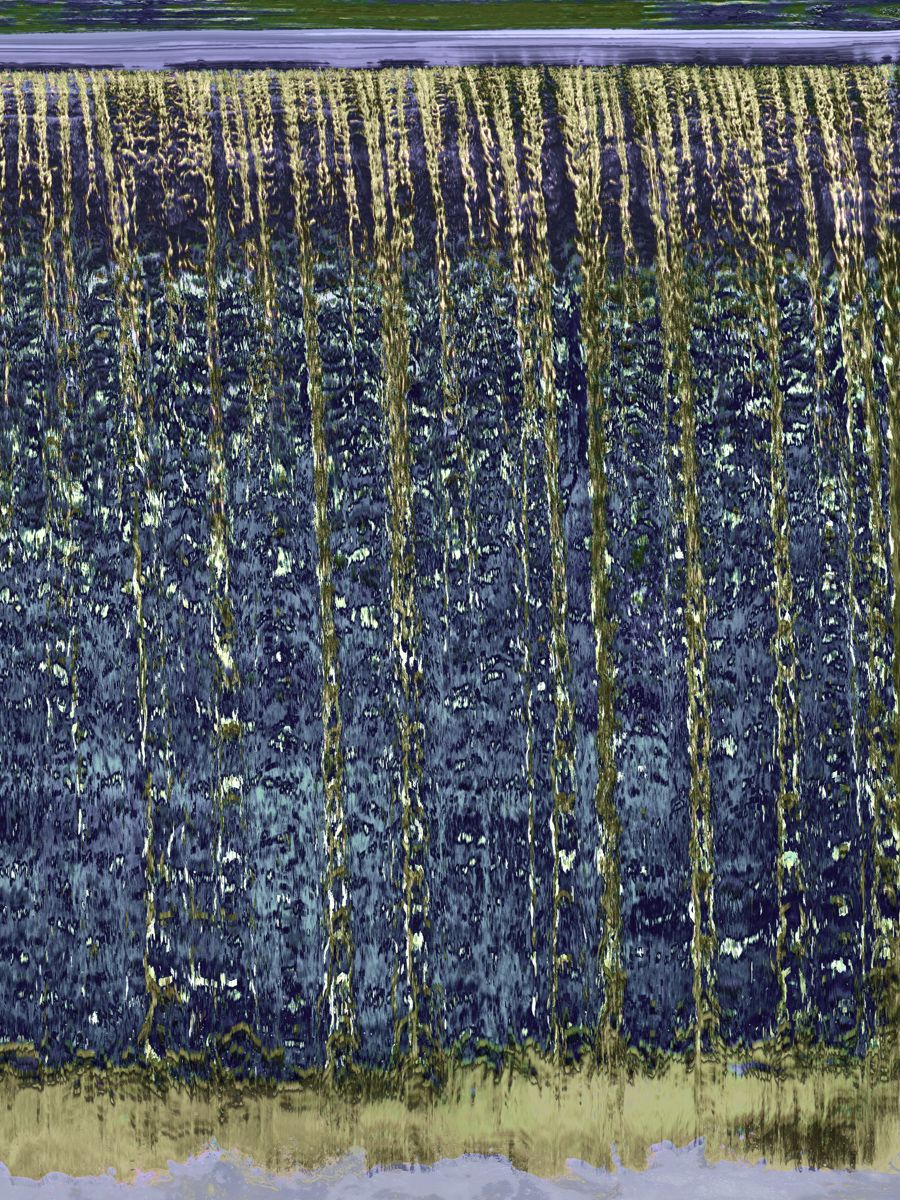
shimmering vertical curtain
shimmering vertical curtain
It started with fine rivulets that, as they fell, merged into larger ripples and ended in a misty boil.
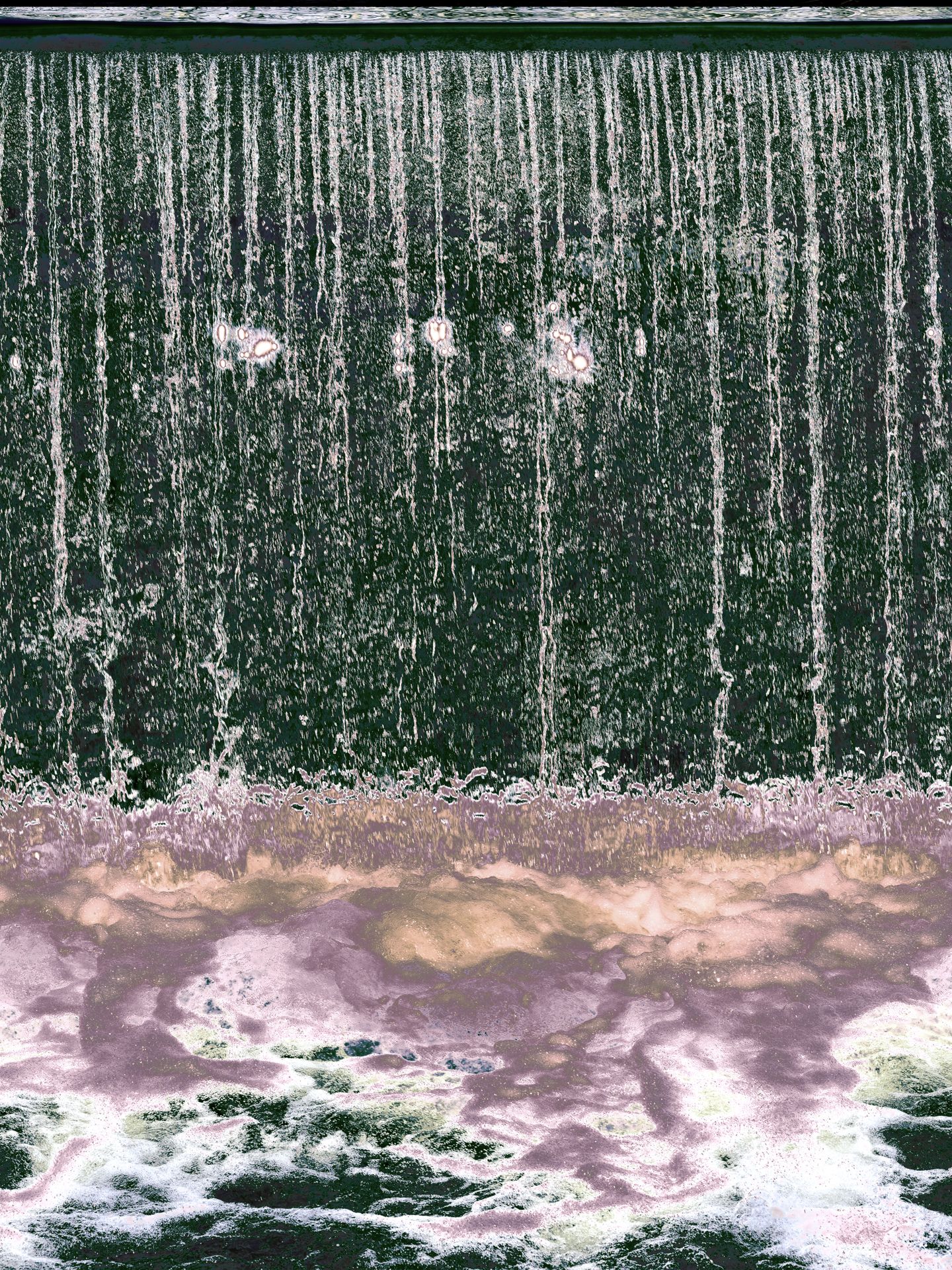
ended in a misty boil
ended in a misty boil
HA knew that he was looking at a living version of one of his falling water images. The fine traceries, the mirrored flat from which they arose, and the ending ripples and boil: all drifted in colors and contours while holding harmonic balance.
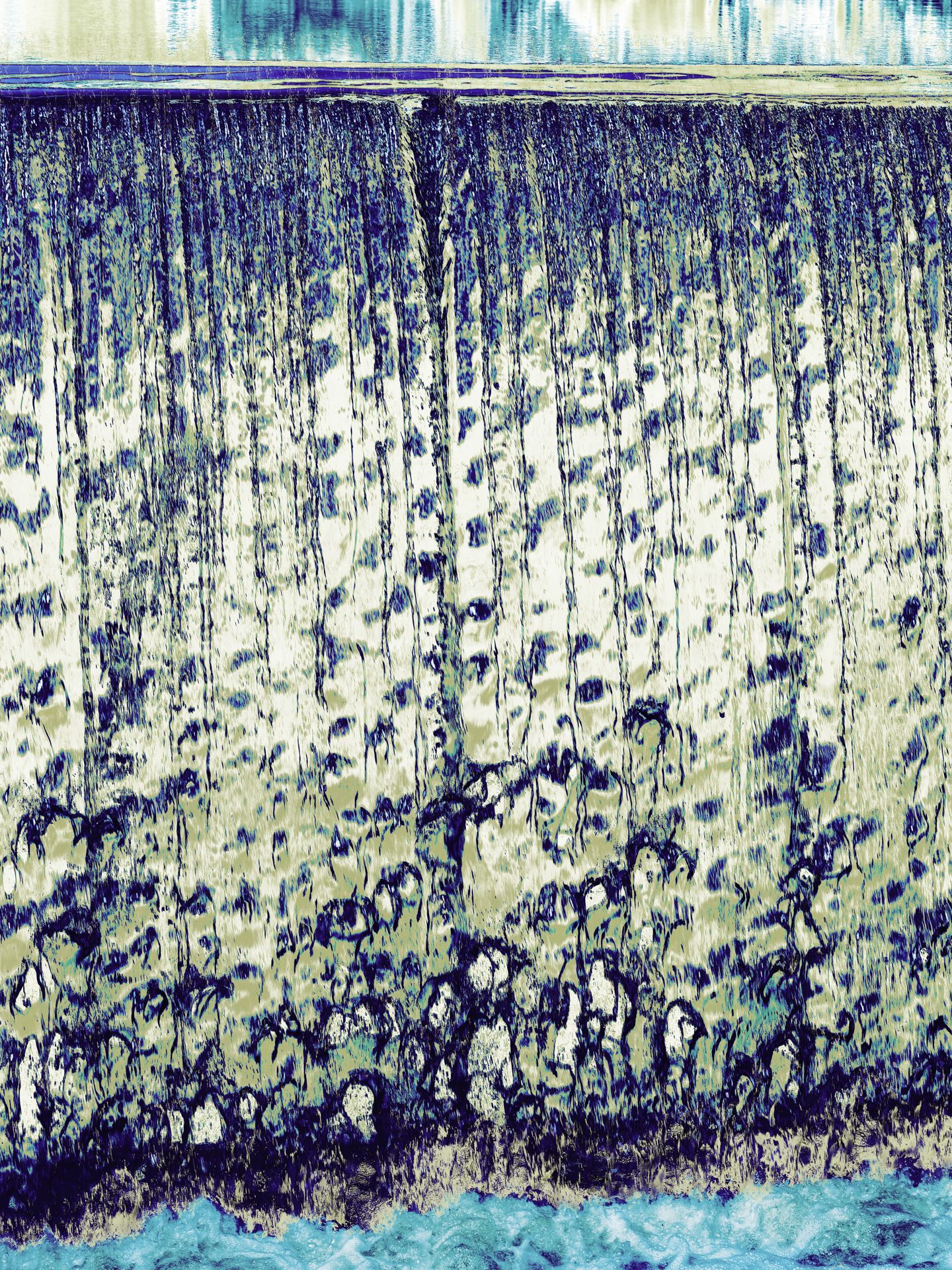
all drifted in colors and contours
all drifted in colors and contours
He had interpreted the fluid energy of the falls in so many ways. Now the living water told more stories of variegation;
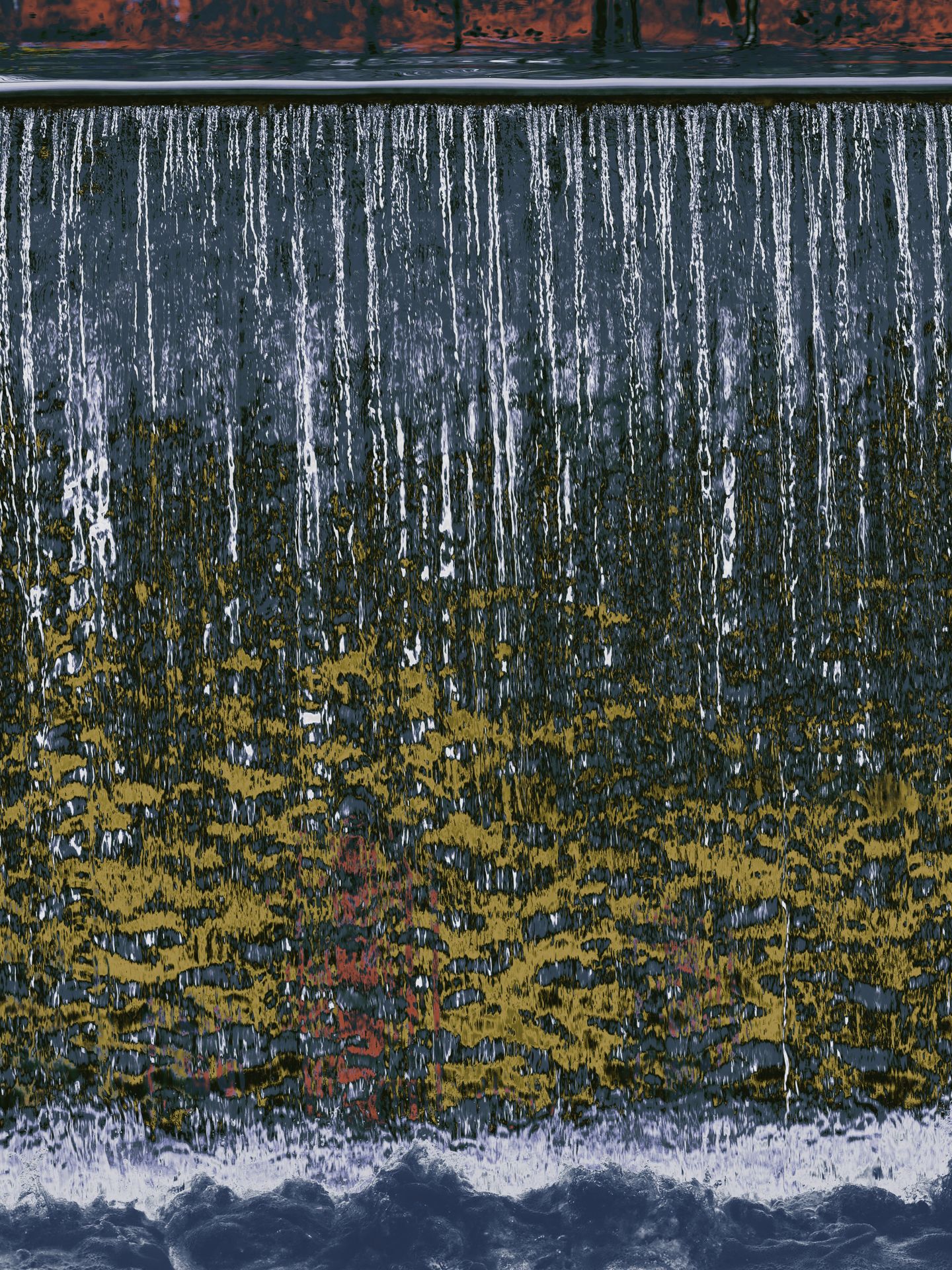
water told more stories of variegation
water told more stories of variegation
the possibilities almost unending, in a moving perceptual riot.
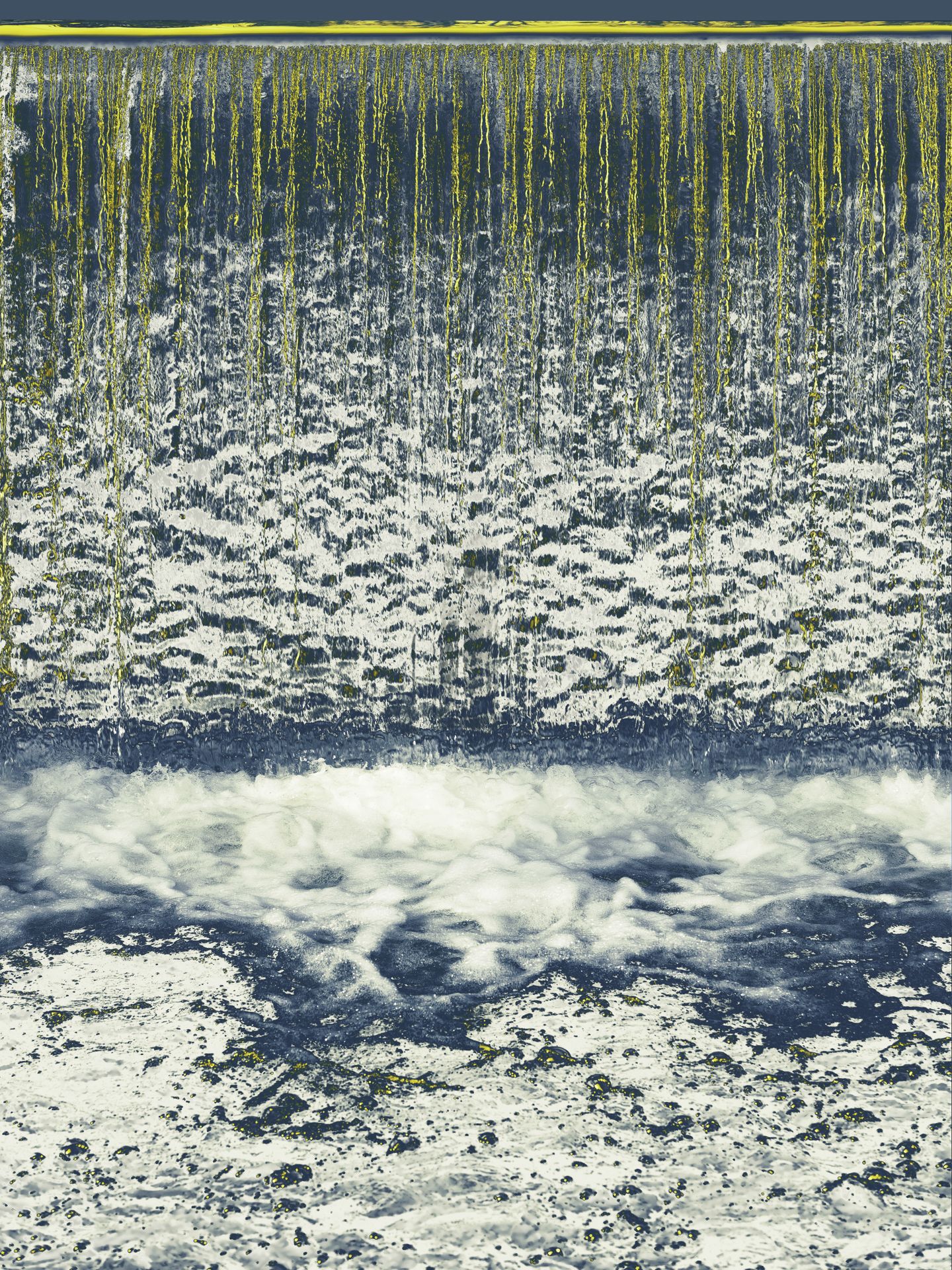
moving perceptual riot
moving perceptual riot
God, HA thought, if I could only hold this perspective. All those images I made were trying to capture this spectacle, this … holy deluge.
Then there was a perceptual flip and he was seeing the fall as a cross-section, like it was tissue layers in the integument of an ancient monster or the skin of Reality itself. The thought was too much to hold. There were more possibilities than he could handle. He needed grounding. He would focus on the merely preposterous idea that he was inside a living river populated with annoying sprites. Be sociable. Work the room.
HA: DK, I’ve seen this. Made this, but on a flat screen. Now it's an eery, pulsating, living thing. Is this what it always looks like?
Decay: Smud perceptions are limited. Looking in one direction instead of all of them. Seeing only one set of colors when they are all there, everywhere. All things are connected and vibrating. That’s just our TrueReality. Yours is — what do they call it — a shadow play. It’s fine for you, just letting you exist and survive in the world. But to actually <channel the flow> one must be aware of all possibilities at once, as we Ckami are. Like in your Bardo, or like they think a quantum computer does.
HA: Someone once said that we can only think one thought at a time. That always seemed absurd. Only that from 86 billion neurons?
Decay: We call it <telescope> mind. You focus on — you’re conscious of -- the tiniest part of what is happening in your skull. Your attention moves around. So that latent, liminal internal world of yours seems detailed and big, but it is still just a rough model of your smud world. I have a theory, though, that once in a while one of you, usually an artist, scientist, or mystic, uses that mind to glimpse into the TrueReality. Then each of you colors it in your own tones.
HA: We do often disagree, even violently, over the nature of the sublime. That’s why I have always assumed that individual visions were only personal, and forcing them to agree was just a useless stimulus for conflict.
Decay: Ah yes, the violence thing again. There is only one purpose for violence, for tearing apart, and that is to re-cycle matter for new life. Your kind has twisted that purpose into mere competition for status, disagreements over ideas or even over facts, and just pure <animosity>. You don’t just waste material, you also waste each others’ being.
HA: I can’t defend what some people do, but you ignore the fact that social competition exists within lots of higher species. Certainly many mammals ...
Decay: Some people? Higher species? You know what species we consider to be the most highly evolved? The leafcutter ants. You know why?
HA: Uh, because they tear stuff up? They're really organized?
Decay: Your kind call them superorganisms. Their colonies have millions of members, and they alone consume a third of all the vegetation in their forests. Those millions make all their decisions together, communicating with touch and chemicals. They immediately turn harvested leaves into new life by feeding them to their fungus gardens and then feeding the fungus to their young. They recycle the waste from that process. They make their own substances to suppress infections. They engineer highways through the forest; travel huge distances horizontally and vertically. In fact, ants of all kinds dominate whatever biome they are in.
HA: But we were talking about social conflict -- violence.
Decay: Most humans are ignorant of how ants actually live, and they would not consider ants to be highly evolved or sophisticated. But leafcutter ants wage territorial war, against other species and against other colonies of their own kind. Colonies containing many millions get wiped out by wars. Severed body parts can blanket big swaths of jungle ground.
HA: I remember seeing videos by an artist (Catherine Chalmers) who videoed leafcutter wars. Amazing horror-story stuff. So how are they better than us war-mongering humans?
Decay: When a colony battles, or gets destroyed, all of its dead substance gets consumed by other ants and many other species. Human wars consume without re-creation. They poison land, air, and water. Humans have more than one way to destroy their world. If they do, our TrueReality would -- who knows --maybe just evaporate. It makes me sick. I should let you find your own way home, back to your delusions.
HA: I wasn't excusing our faults. To us, what we see in other species helps us understand ...
Decay: ... nothing ...
HA: ... why we are …
Decay: There is no why. You lack justification for your being. Follow me!
HA was yanked so hard that he felt his neck stretching. Like one of those poor dogs whose owners drag them down the middle of the street. They are hellbent on “getting the dog walked” when the dog just wants to stop and smell the grass, learn what’s going on.
The scenery passed in a blur. Then they arrived at a scene that he knew well, but he now saw afresh. It was bright leaves layered over blue surfaces, but it looked like reef fish swarming around boulders, with sunrays grazing clouds of kicked-up sand.
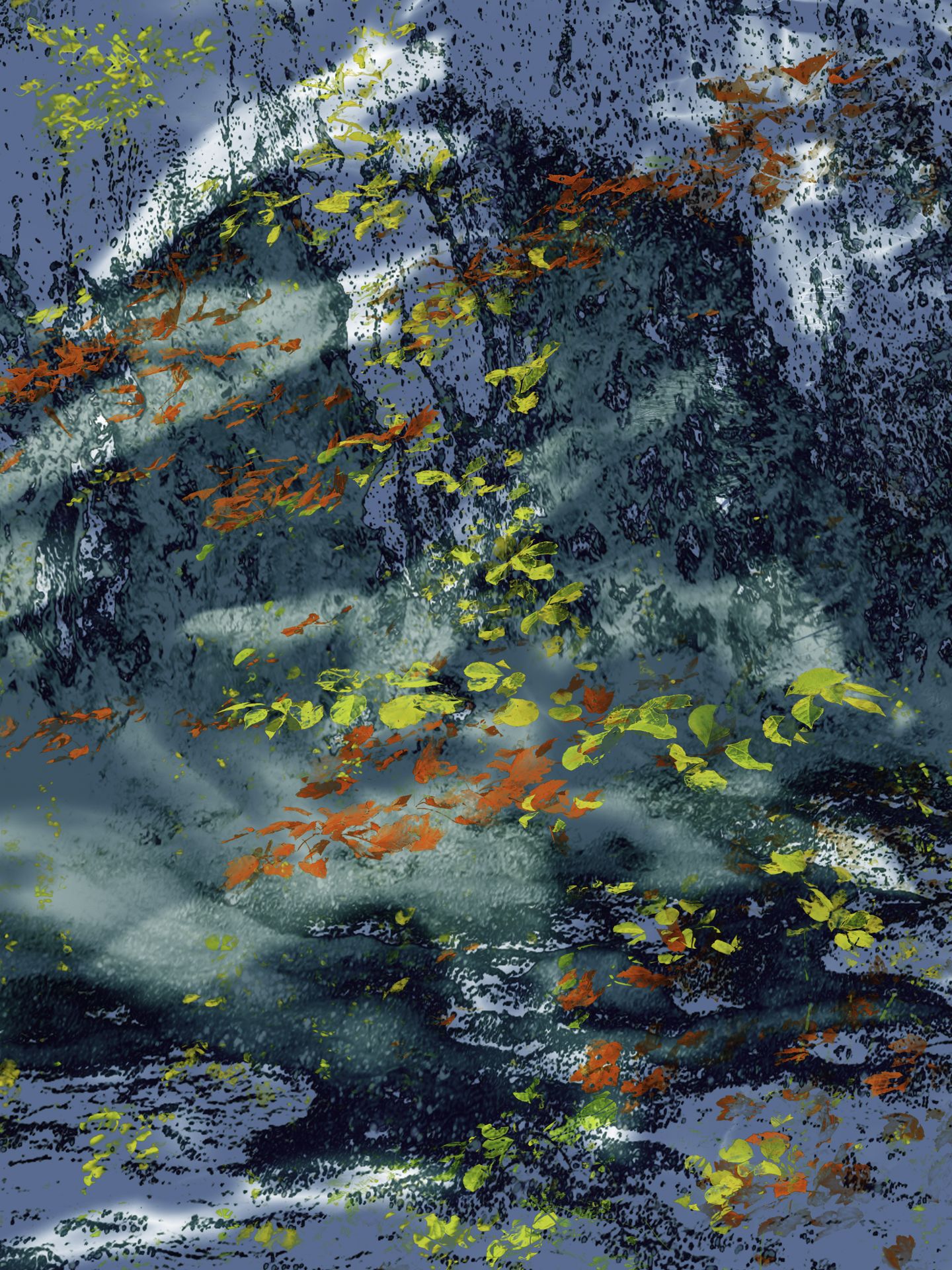
reef fish swarming around boulders
reef fish swarming around boulders
Then it looked like flocks of monochrome birds passing an icy cliff.
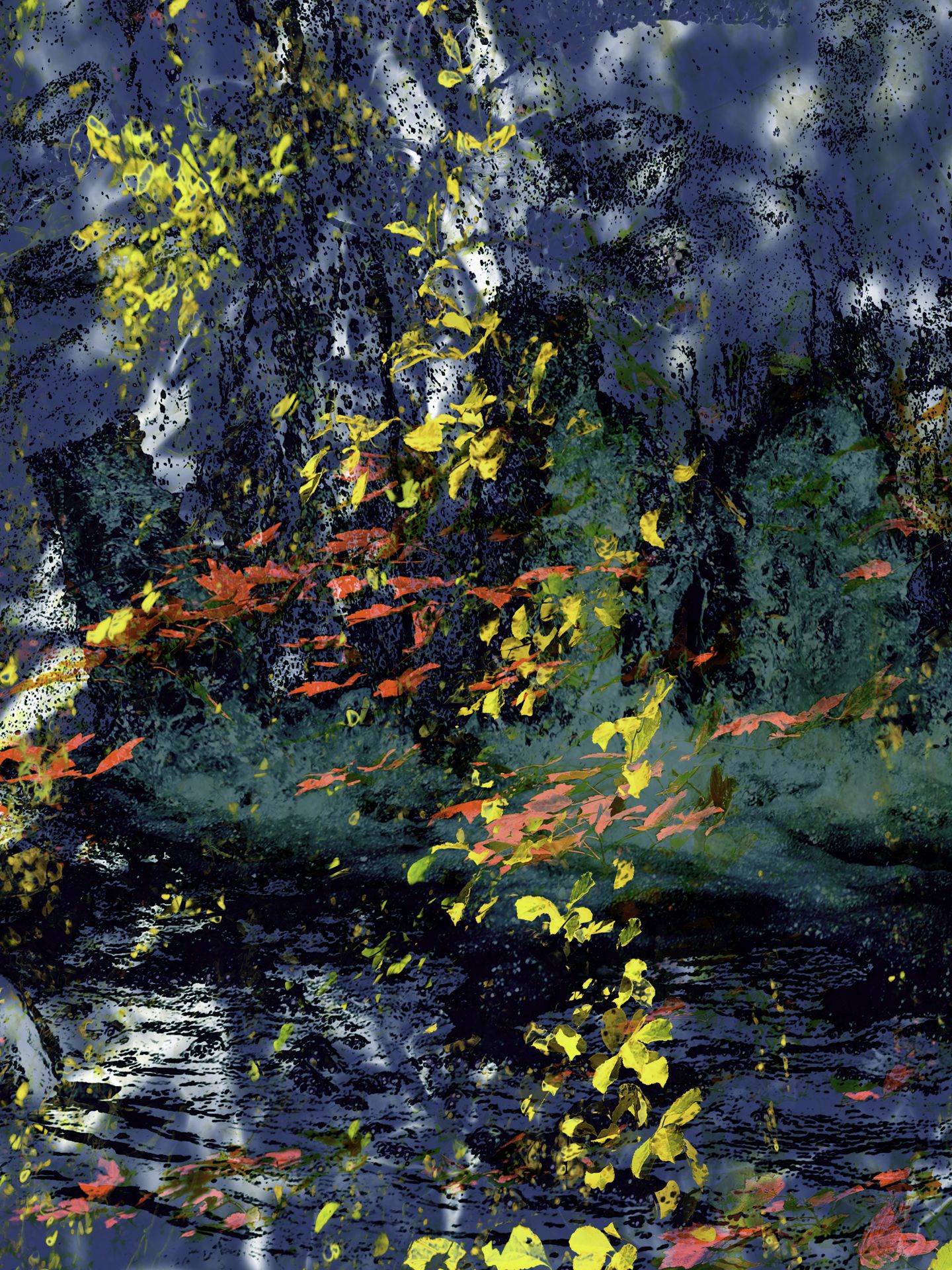
flocks of monochrome birds
flocks of monochrome birds
It also felt homey, a scene he had made over and over, in love with the perfect contrasts. It made him proud.
HA: So, what are the orange, red, pink, and yellow thingies that I so clearly foresaw? And how about them brush strokes? Not bad for photography, huh?
Decay: We don’t doubt your vision, just your judgment. Those ‘thingies’ are quirreps. They are the TrueReality shadows of nascent smudlings. You might call them souls.
HA: But what kind of smudlings? Fish? Birds?
Decay: Yes.
HA: Yes to both?
Decay: Yes. And voles, centipedes, ants, shrubs, trees, grasses.
HA: You mean like any kind of living thing?
Decay: And potentially anything else that has a Ckami. Some you would call inanimate, but that’s just your illusion.
HA: Holy crap! So is it one quirrep becomes one smudling? Or many smudlings?
Decay: It varies. Depends on what the environment needs at the time.
HA: You said they are like souls, but souls are supposed to be eternal.
Decay: Quirreps are not. They appear when needed, and pass when their smudlings are born.
HA: How can that work? Who decides when and where quirreps show up, and what they become?
Decay: We don’t know. If we somehow cause quirreps, it is not obvious how. When the quirreps appear, we know something in smud world will soon change.
HA: Well, I’ll be damned. First I learn that humans aren’t in charge. Then I learn that Ckami aren’t either.
Decay: We have enough to do without worrying about quirreping.
HA: Maybe humans feel the same way about Ckami. Not many of us believe in spirits these days.
Decay: Your indifference does you no credit. We make sure that your smud world is functional and stable, even as humans work against us. But I will admit that your images seem to have captured the dynamic nature of quirreps: their many sizes and shapes, the way they flock.
HA: I could sit here all day and watch them. It’s like they are my very own creatures. If I was a biologist, I could give them names.
Decay: More arrogance. Taking credit …
HA: I said It’s like. You’re way too sensitive. You give me a compliment, I tell you how I feel about it, and you lash out.
Decay: Maybe you are right. I just don’t want to sit and stare at boring, dumb quirreps. Anyway, there’s a lot more to our TrueReality than you’ve seen.
HA: Like what?
Decay: TrueReality has three Phases. We call them Stone, Water, and Air. Sort of like your ideas of solid, liquid, and gas. But not really. So far, you have only visited Water Phase. But your images show you have “imagined” all three.
HA: Can you go from one to the other? Is it far?
Decay: We can. They are right next to each other, like thin slices. You just pop through.
HA: But how?
Decay: Well, putting it in your terms, to pop over to Stone you just squeeze your eyes tightly shut and fart.
HA: In my world, we have a saying: never trust a fart.
Decay: Not a concern here. Certainly not for me since my name, after all, is Decay. Shall we? One, two, three!
STONE PHASE
There was indeed a pop, and when he opened his eyes Decay was gone, but HA remained even though he had squeezed and pushed as best he could with his unfamiliar body. Then part of Decay reached out of nowhere and yanked him yet again. Things changed.
Stone phase indeed resembled its namesake, having more finely varied textures, sharp edges, and irregular shapes. It was largely quiet and still, yet somehow dynamic, evoking eons of formative mineral motions. It was a huge contrast with Water Phase. There were surfaces he could see, but at the edge of his gaze, he could see through them all, like being inside a translucent geological foam.
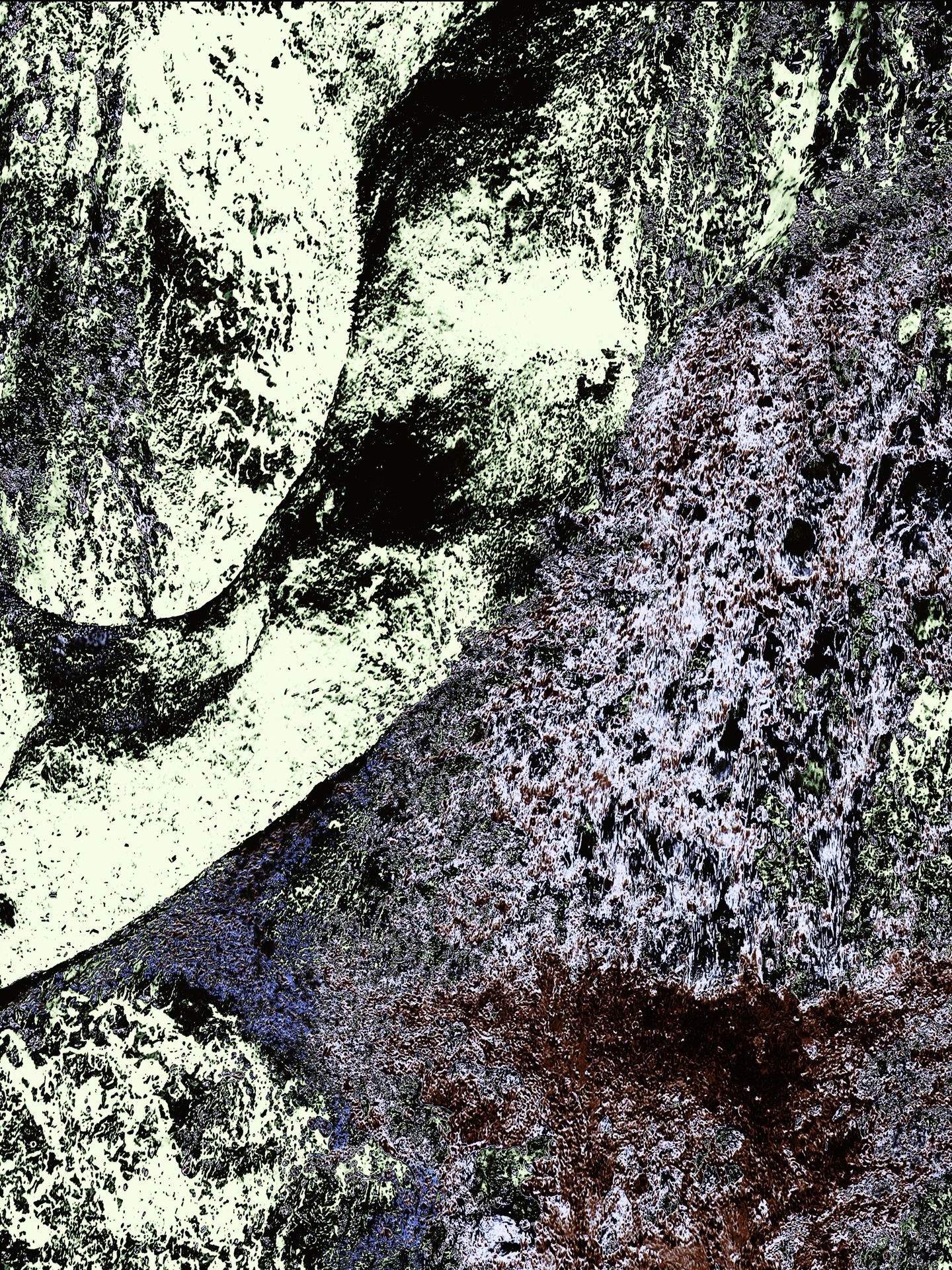
translucent geological foam
translucent geological foam
There was a hint of slow movement, either smooth and convex like lava, or else fluid, penetrating and turbulent, as if the stone world could liquefy and erode itself.
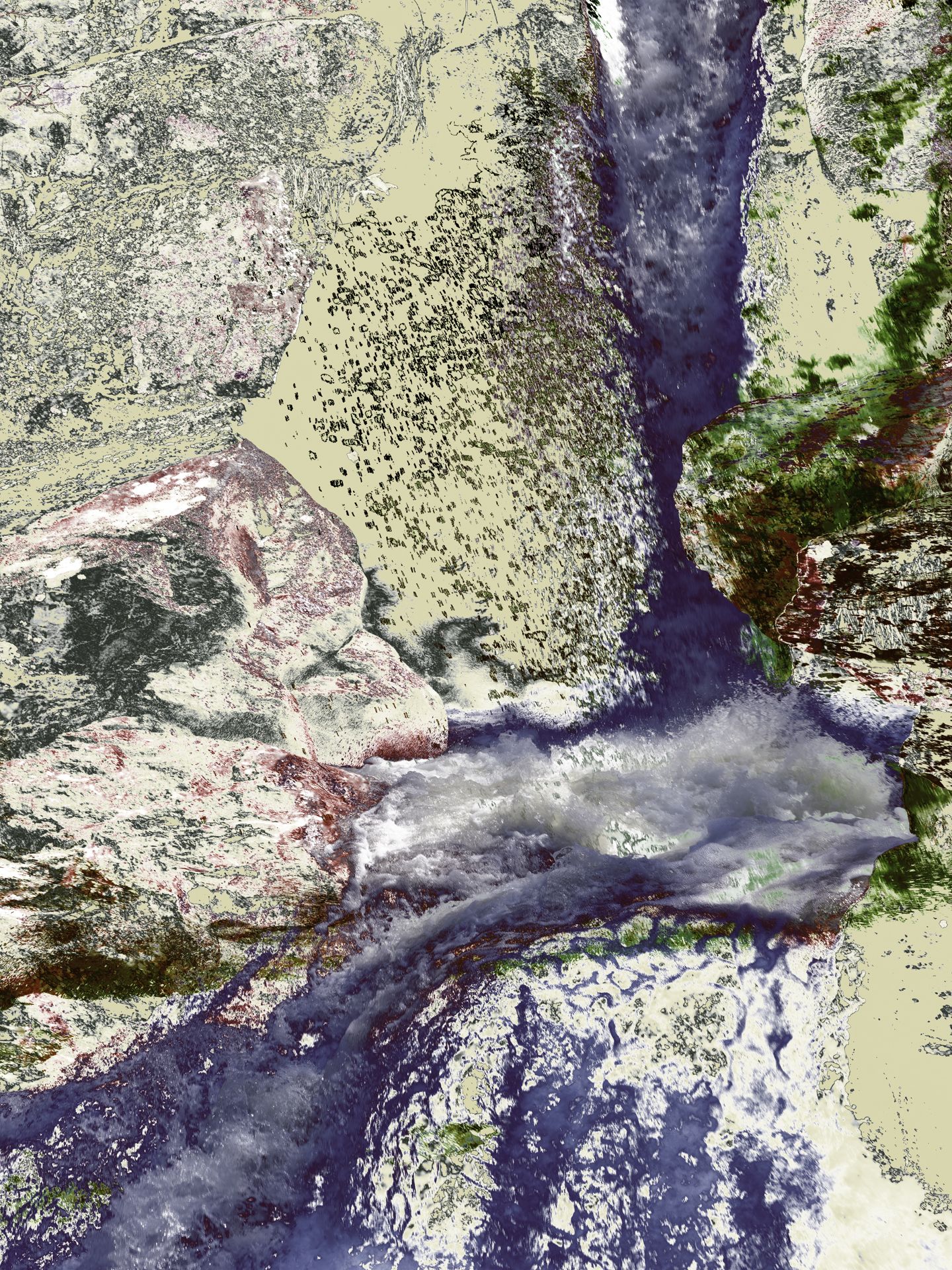
stone world could liquefy
stone world could liquefy
For all its vast weirdness, it was familiar. He had made its likenesses in his Bardo, using photos of cascades tumbling over wood snags and rock strata that were exposed and eroded by running water. There were depths in those photos, and to find them he had digitally pried the rocks apart in gossamer layers.
He could not help but be impressed that he once again had unearthed a hidden but real world, starting only with piles of pixels.
Decay gave him what seemed like a knowing look.
Decay: Yes, your monkey mind imagined this, too.
HA: Hooray for moi. But what is this whatcha-callit …
Decay: Phase of the TrueReality …
HA: … for?
Decay: Here is where we can visit deep time, apprehend long cycles, and experience the impermanence of the permanent.
HA: I’ll be damned — once more. If only people could experience such an extended perspective on things then …
Decay: There might be less of your hyper-shit.
HA: Even though you are very cranky I’m starting to admire your insight. Can we go look around? I see things that deserve a closer look.
Decay: Knock yourself out.
HA took a big step, started another, and bang! His head (or anterior end?) rang like a gong.
Decay: I should have said don’t knock yourself out. We can only move through the Stone Phase if we go very slowly.
HA: Thanks for the timely advice. Where is everybody? Are they put off by the risk of getting conked?
Decay: It’s mostly to do with inconvenience. The perspective is great here. But when you go back to another Phase anywhere from 10 to 1000 times as many moments can have elapsed.
HA: Yikes! Not sure I can spare that kind of time. Elena would miss me.
You know, some vistas here are almost astronomical. I mean like ginormous dust clouds and galactic extravaganzas seen through a space telescope.
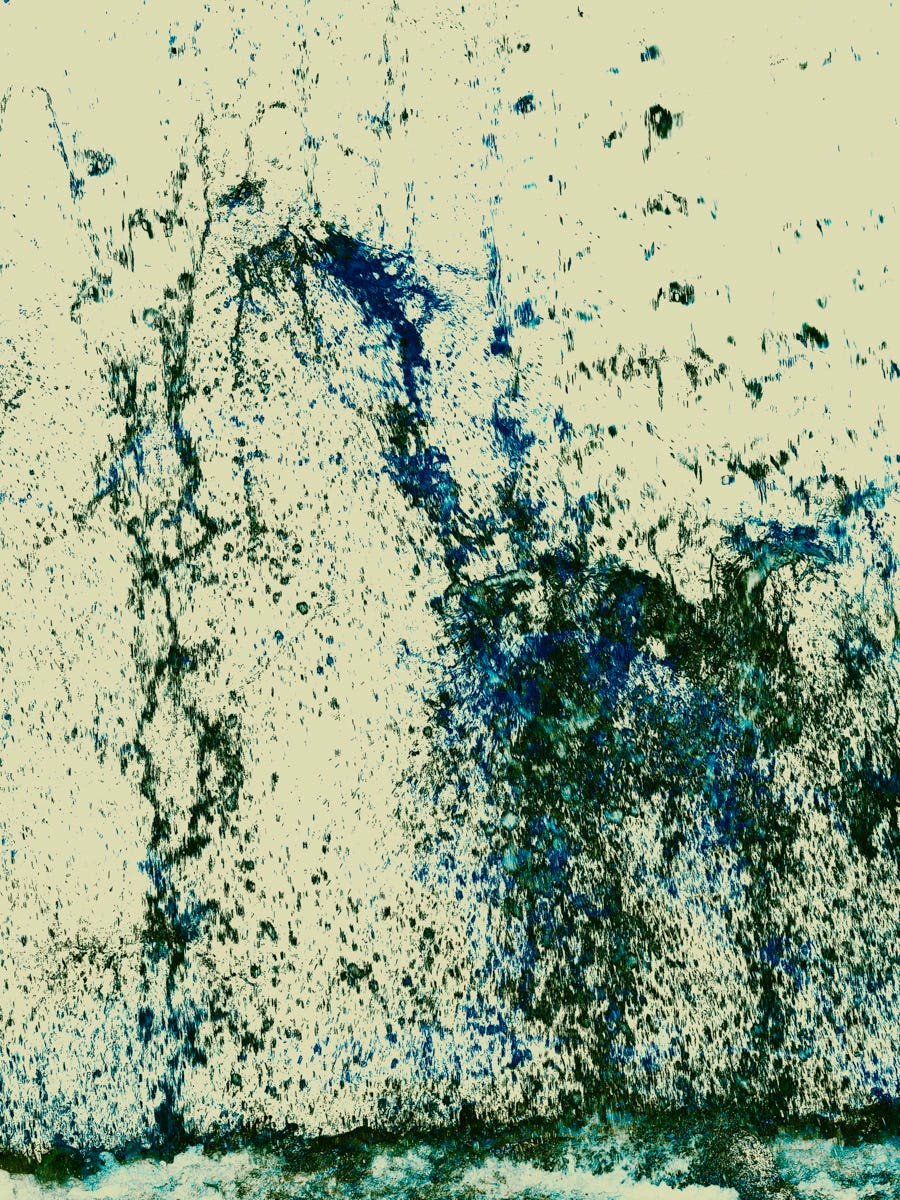
dust clouds and galactic extravaganzas
dust clouds and galactic extravaganzas
Decay: You are sort of right. The further you look here, the farther back in time you go. Like in your astronomy.
HA: What are those red clusters over there, like schools of fish?
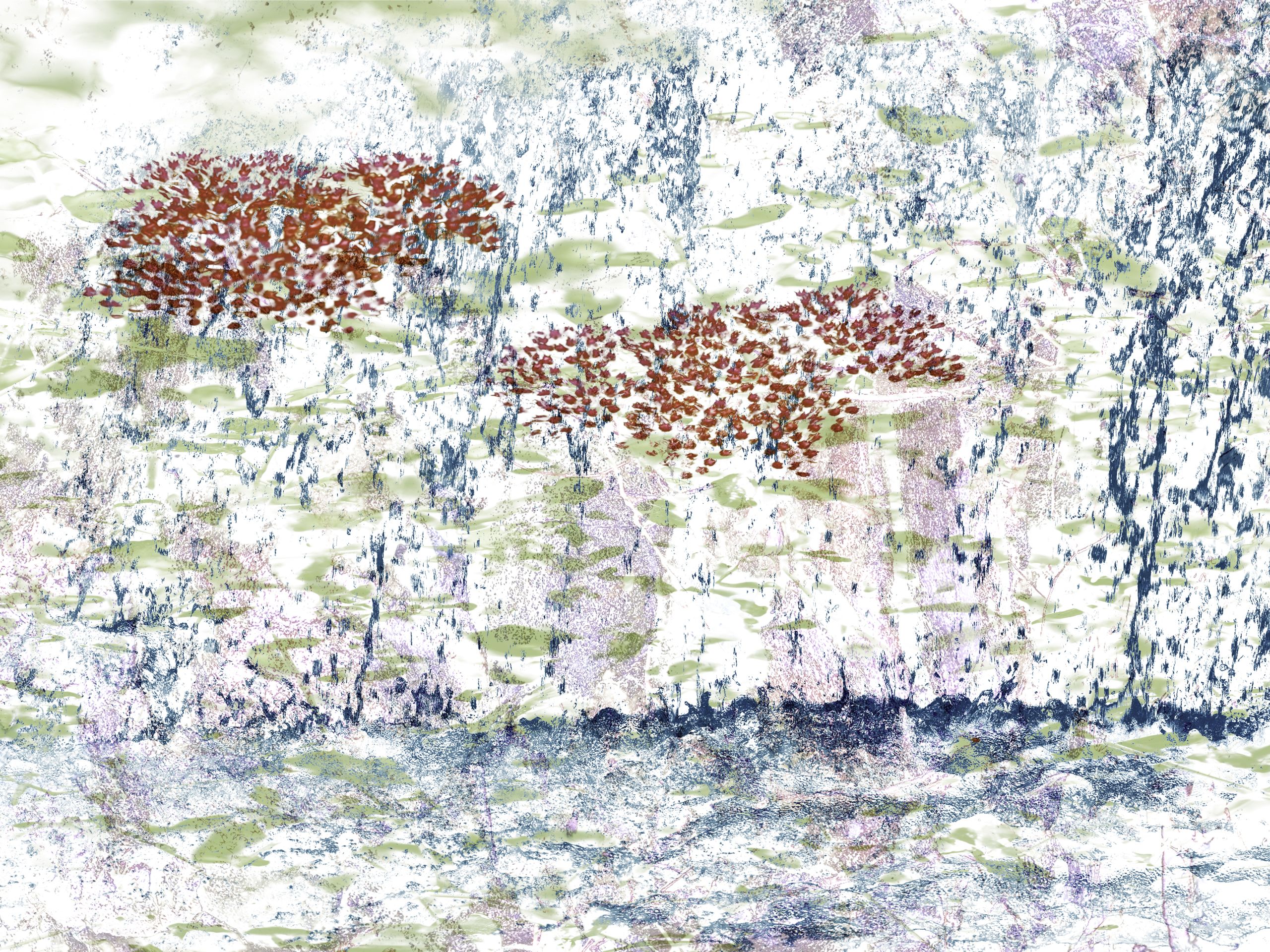
like schools of fish
like schools of fish
Decay: <sigh> Quirreps. Again.
HA: Really? How long have they been here?
Decay: Many smud lifetimes, I suppose. And, no, I don’t know what they will become. One reason is that we Ckami do not remember our own time as quirreps.
HA: Wait, quirreps turn into Ckami? And into smudlings?
Decay: Duh. No Ckami, no smudlings. And, the Ckami that I know personally haven’t lived long enough to know much about Stone Phase quirreps. Some of the ancient Ckami might, but we have mostly lost touch with them.
HA: Why is that?
Decay: Some say they kind of fade away from irrelevance as times change. Others say that is stupid. They counter-claim that the ancients transform into the <background principles>, the <infrastructure> of our Ckami realm. The closest analogy would be your physics and chemistry, your vortexes and ley lines.
HA: Wait. Those are two different things. Like science and Woo. Oil and water. They don’t mix.
Decay: Yes, well that’s another monkey-specific problem isn’t it? Your kind can’t get your conceptions of reality straight. You’d rather fight. Anyway, I’m talking about our reality, which is both science-y AND woo-ish. It naturally evolves, like your deterministic universe idea, but we Ckami also mold it in ways that you would call supernatural.
HA: But, but …
Decay: You are present here in a realm you imagined but never expected to be real. Yet you are worried about puzzles of monkey philosophy? Observe and learn, Grasshopper.
HA: Fair enough. When you get closer, the quirreps kind of look like leaves, and some look faded. I guess they are further back in the rocks?
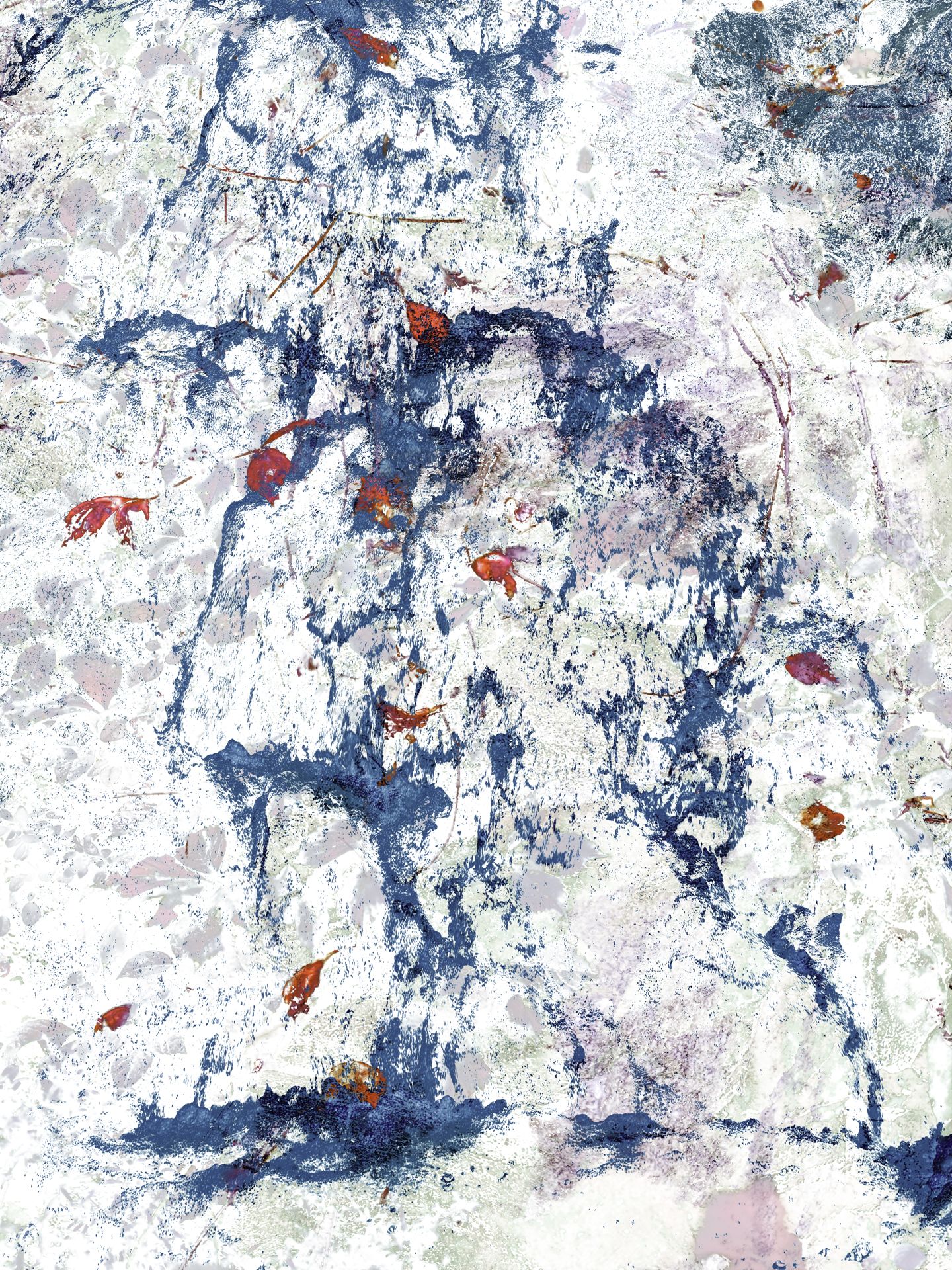
further back in the rocks
further back in the rocks
Decay: Look closer.
HA: Oh my. The quirreps are actually clouds of tiny bits, and they’re connected. Is that because they are alive, or ... ?
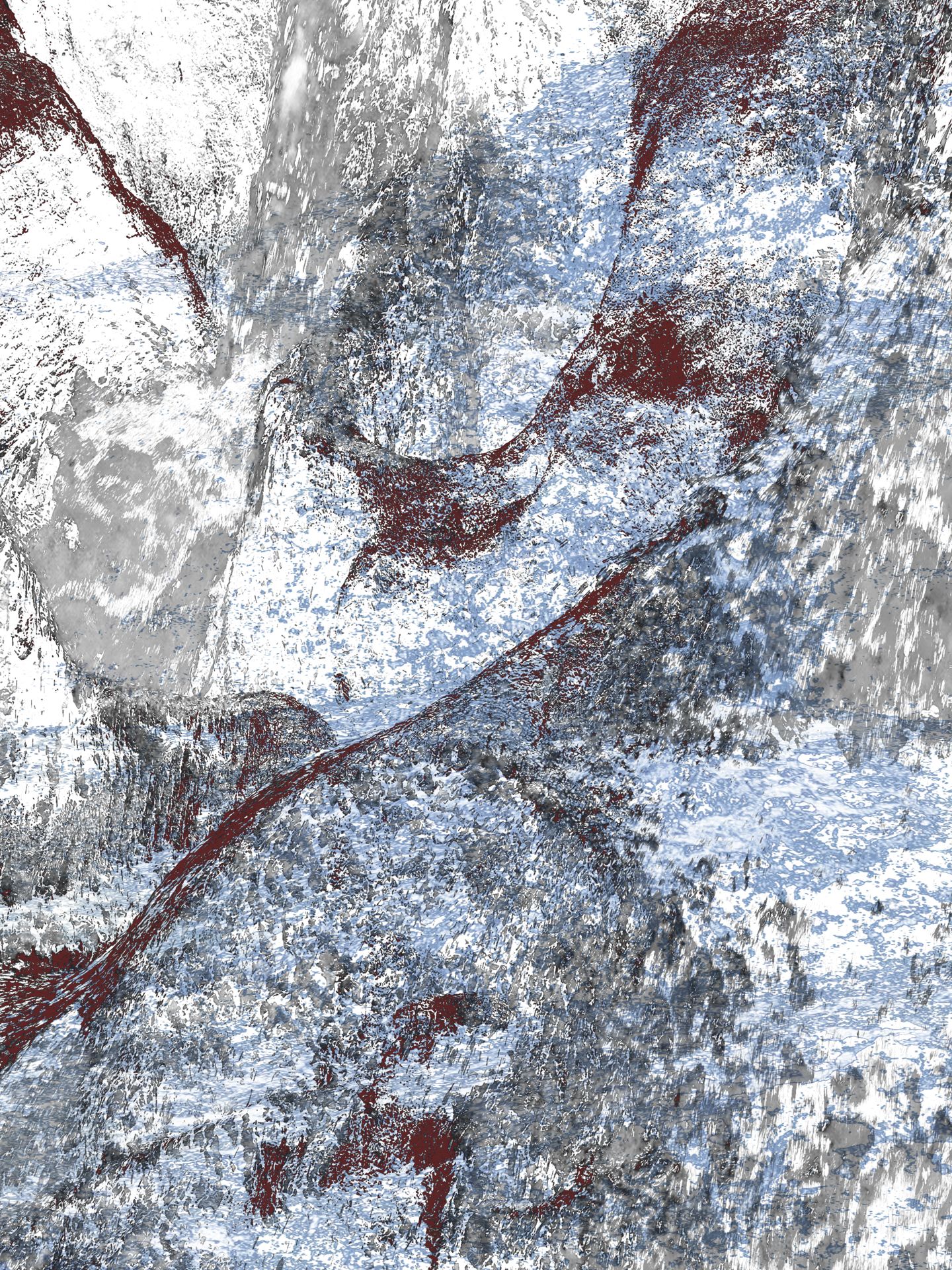
quirreps are actually clouds of tiny bits
quirreps are actually clouds of tiny bits
Decay: No, it’s just that everything is made of parts. Look over here, again closely.
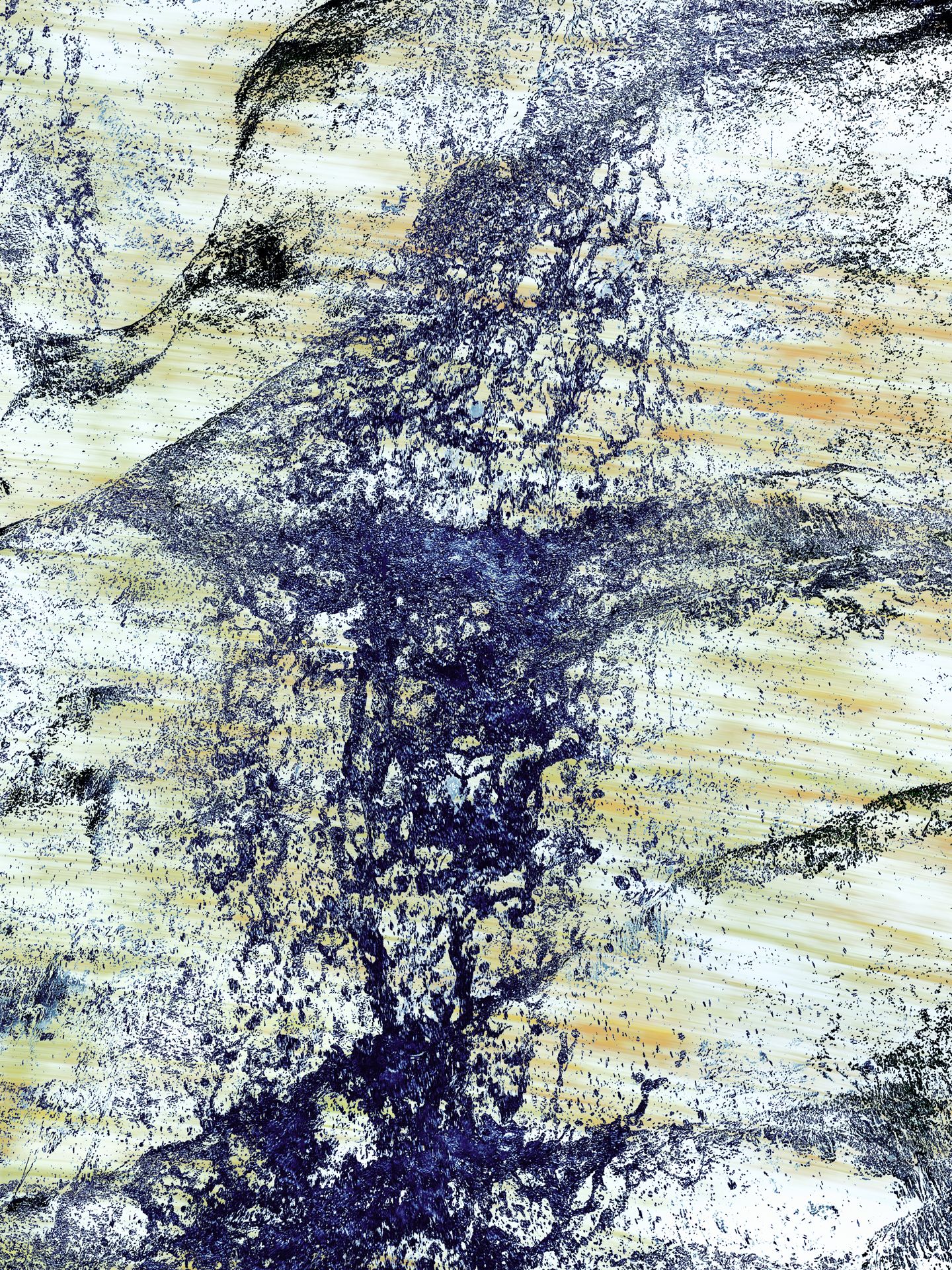
over here, again closely
over here, again closely
And over here, to the right of that molten streak.
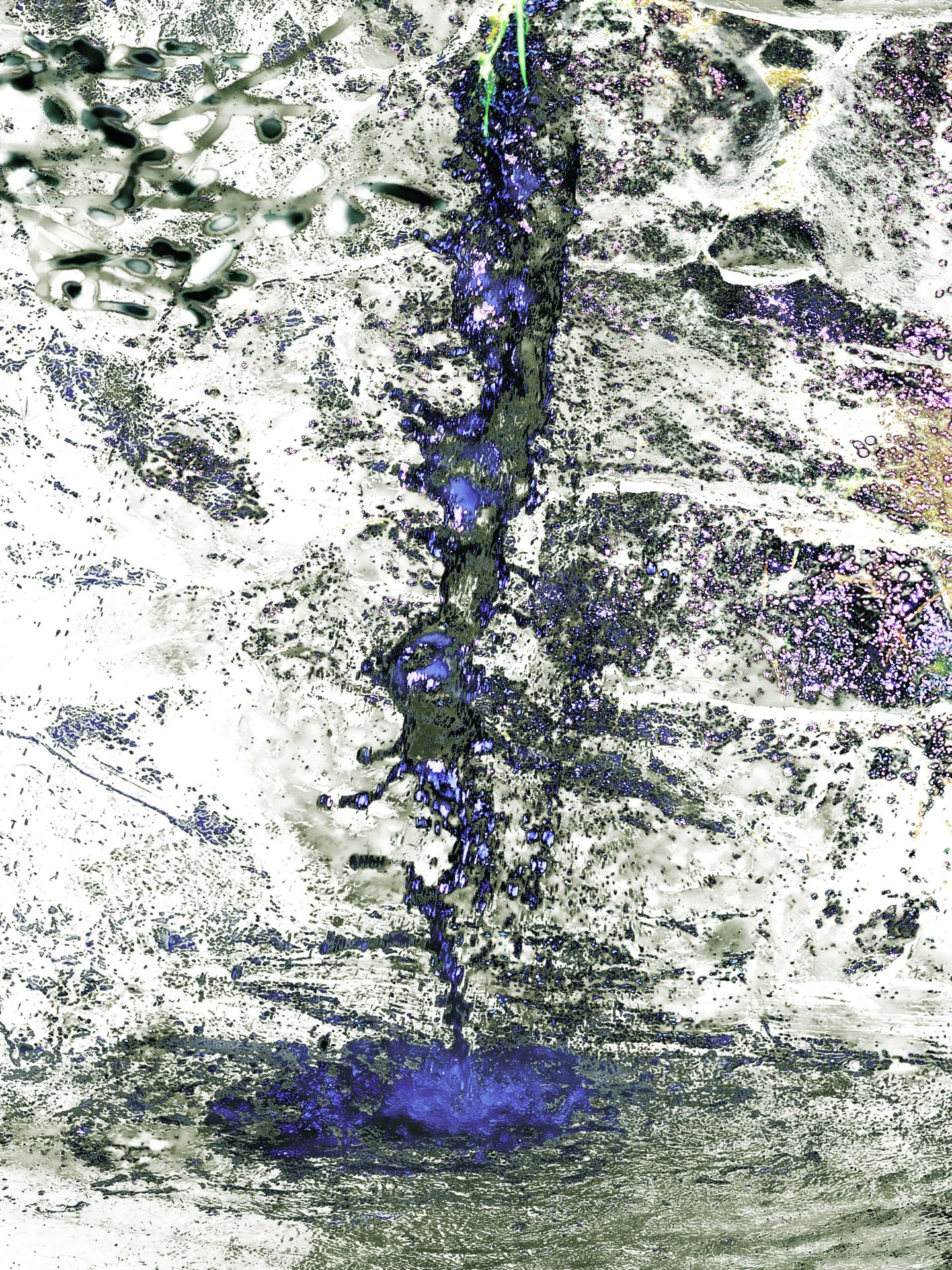
that molten streak
that molten streak
HA: Amazing! There are cells of different sizes and patterns of smoothness. Is this just a Stone Phase thing? What does it mean?
Decay: It means nothing. Well, perhaps something. It means that your dualisms — smooth and rough, continuous and discontinuous, wave and particle, vibration and stillness — are simply false. It’s all just texture. In Stone Phase we see more differences in texture because time goes slower.
HA: To me, in my images, it was just added visual interest.
Decay: Your world is no different. It’s just that the particles, the bits, are usually too small to see. Everything, living or less living, consists of bits, and sheds those bits. Sometimes you sense the wandering pheromones or dropped molecules from other creatures, the signals from plants talking, or even the sharp scent of a newly cracked stone. Your immune system reacts to stray cells when they touch you. They are there, but unseen. And, of course, there are atoms. If atoms were individuals, your every breath would contain atoms that had been breathed by every human that ever lived.
HA: OK. But wait, there are no individual atoms?
Decay: That’s what your quantum theorists say. They might be the only humans who would be comfortable in our TrueReality.
HA: I hear water. Are we moving? I see patches like dried paint. And glowing, immiscible particle clouds.
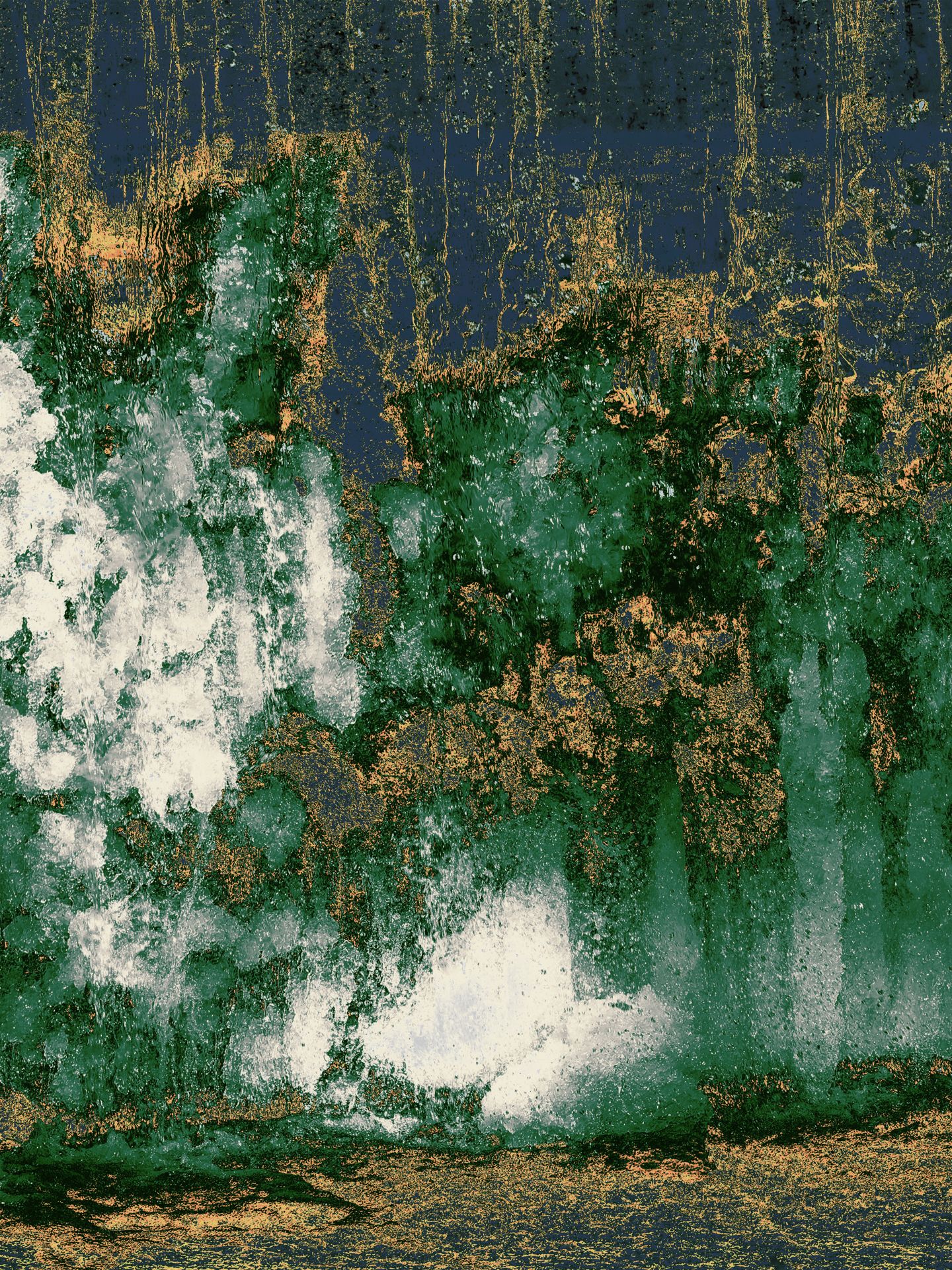
glowing, immiscible particle clouds
glowing, immiscible particle clouds
AIR PHASE
Decay: We are leaving Stone Phase for Air Phase.
HA: Don’t we have to hold our noses and blow real hard or something?
Decay: We’re taking the slow, in-between way for your sake. As you said: all paths return. For a while, as we go along, Stone and Water mix together.
HA: It smells like wet clay.
Decay: As it should.
HA: I still wonder …
Decay: What?
HA: … how I can ask this without giving offense? How is it that I, of all the artists out there, am the one whose vision corresponds exactly to your so-called TrueReality? Isn’t that absurdly unlikely? Isn’t it really more likely that I am dreaming or hallucinating this?
Decay: Yes, we find the question offensive. As many of us noted when you first showed up: you did not make any reality. That is a crazy idea, and furthermore: we are more real than your dreams. As I said before, each of you colors your world in your own tones. But it’s more than that. You may feel that you are peering inside to some core of the real, but your view is a shallow one. We share the River Place between smud world and ours, and it provides a simile. Your view is like the reflections off the surface of a river that obscure what’s below.
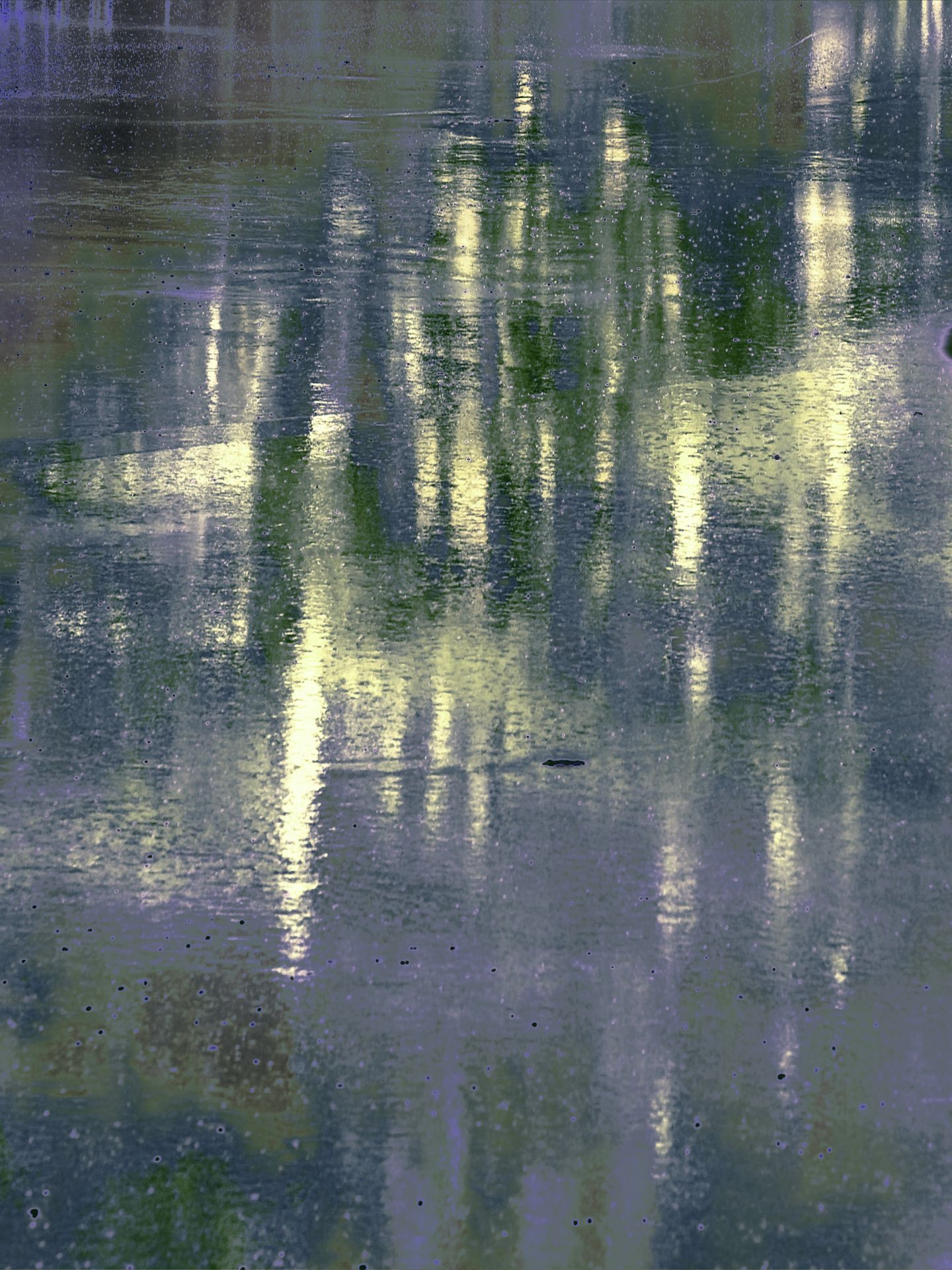
reflections off the surface
reflections off the surface
Others will see different reflections. Some will not have any glimpse of the real at all because they are tuned out, not looking.
HA: So what determines another artist’s vision? They are so wildly different.
Decay: I have opinions about that, based on what some of the older Ckami have said about human contact. First: a vision of our TrueReality can only happen when the artist focuses on a real locality in smud world and tries to grasp its path in deep time. That puts the artist closer to the essence of the Place in TrueReality. It is also true that there are different Ckami, and different kinds of Ckami, in different Places. And finally, any Place is multiform, containing many possibilities. You have not imagined all the ways that even Waterfall Place can be.
HA: I’m wondering how this relates to mystical visions and religions.
Decay: I suppose mystics and artists are doing pretty much the same things. In the earlier times, we saw more mystics, and I must say they were more able to accept the truth than you moderns are. And quite a few beings combine artist and mystic. Like your William Blake.
HA: OMG, of course!
Decay: As for religions, that’s a matter of humans’ so-called culture. It’s when a bunch of you mostly agree on a position about the mystical nature of things, smud or Ckami. There’s even a religion with a vision very parallel to Ckami world.
HA: Ahhh ... oh, you mean Shintoism. Like a number of religions, it also has demons or meddlesome spirits that haunt my w — smud world. They are called yokai, I think.
Decay: You want to know our take on demons?
HA: Maybe … of course. Sure.
Decay: Humans get the demons they deserve.
HA: But you’re saying there are demons?
Decay: Very many of them.
HA: Holy sh!t!
Decay: I guess you could call them that. Would you actually like to meet some?
HA: Uhhh…
Decay: Demons are Ckami who delight in crossing over to bother human smudlings where they live. Although not as many anymore.
HA: Can they be summoned?
Decay: See, that’s why smudlings get what they deserve. They come right out and ask for trouble.
HA: I don’t want to meet one. But, you said ‘crossing over.' So your kind can enter my world?
Decay: Yes, in most of human encounters with us they see us as supernatural creatures. And if the encounter involves, let’s say, a certain amount of friction then we are understood to be demons or yokai, djinn, ifrits, or other evil whatevers. Humans get carried away imagining god-ish beings. Lovecraft was one — always went beyond the knowledge he actually had.
HA: So, Ckami penetrations explain a lot of myth-making. Was there an actual Chthulhu?
Decay: We don’t talk about that.
HA: Hmm. What about Tolkien?
Decay: Oh, yes. We liked him better than Lovecraft. We encourage your kind to assimilate our contacts into your existing frameworks. Otherwise, you get too nosy. Humans start talking about undiscovered truths, secret cabals, and ancient esoterica.
HA: And that’s bad why?
Decay: They get grandiose ideas, and pretty soon they want to break into the TrueReality and go around asking stupid questions.
HA: People should just stay in their place, then? Keep their heads down and mind their own business?
Decay: You are sarcastically asserting your own precious values there. But it’s simple, really: the tail should not wag the dog.
HA: So what if I go back and say that I have actually been to a realm where quirreps live and move around inside solid stone, and I show images of those things?
Decay: Then your claims will be assimilated. The realm will be identified as Shintoism’s underground afterlife, the Yomi, and quirreps will be restless spirits of your dead. Or your visions will be attributed to brain chemistry or to being possessed. Or just to your bid for attention in a crowded art market. You will be mocked, reviled, or loved — whatever.
HA: What-ever indeed. I guess it’s pointless for me to take offense.
Decay: No offense was intended or expected. Did you know that humans more than once tried to count how many Ckami there are? For the Christians, it was 66 lords of Hell, altogether ruling 666 legions of 6,666 demons each. Comes out to about 4 million. That was figured out only a few hundred of your years ago. Shinto adherents to this day keep lists of all their known Kami. Although, by tradition, they are either uncountable or about 8 million.
HA: OK. I get that Ckami know more about us than we do about them. We must be in Air Phase now? But this almost looks like rock art here.
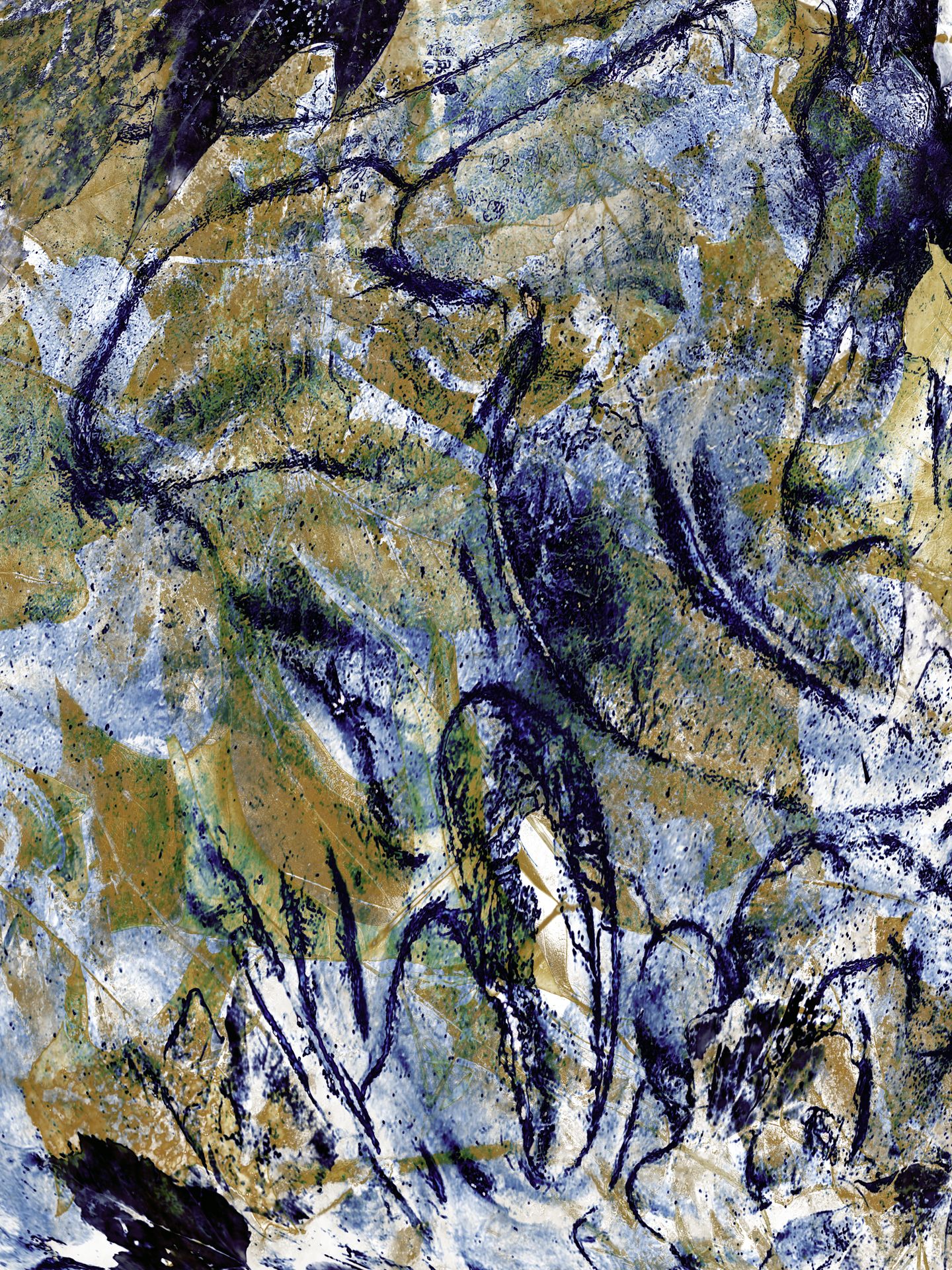
like rock art
like rock art
Kind of familiar, too. Those marks seem to be drifting.
Decay: They are. You can think about Air Phase as the proverbial realm of light. All objects here are like motes: floating and translucent, though they’re rarely tiny. See, just behind us, where we came from, all things are still sticky and enmeshed.
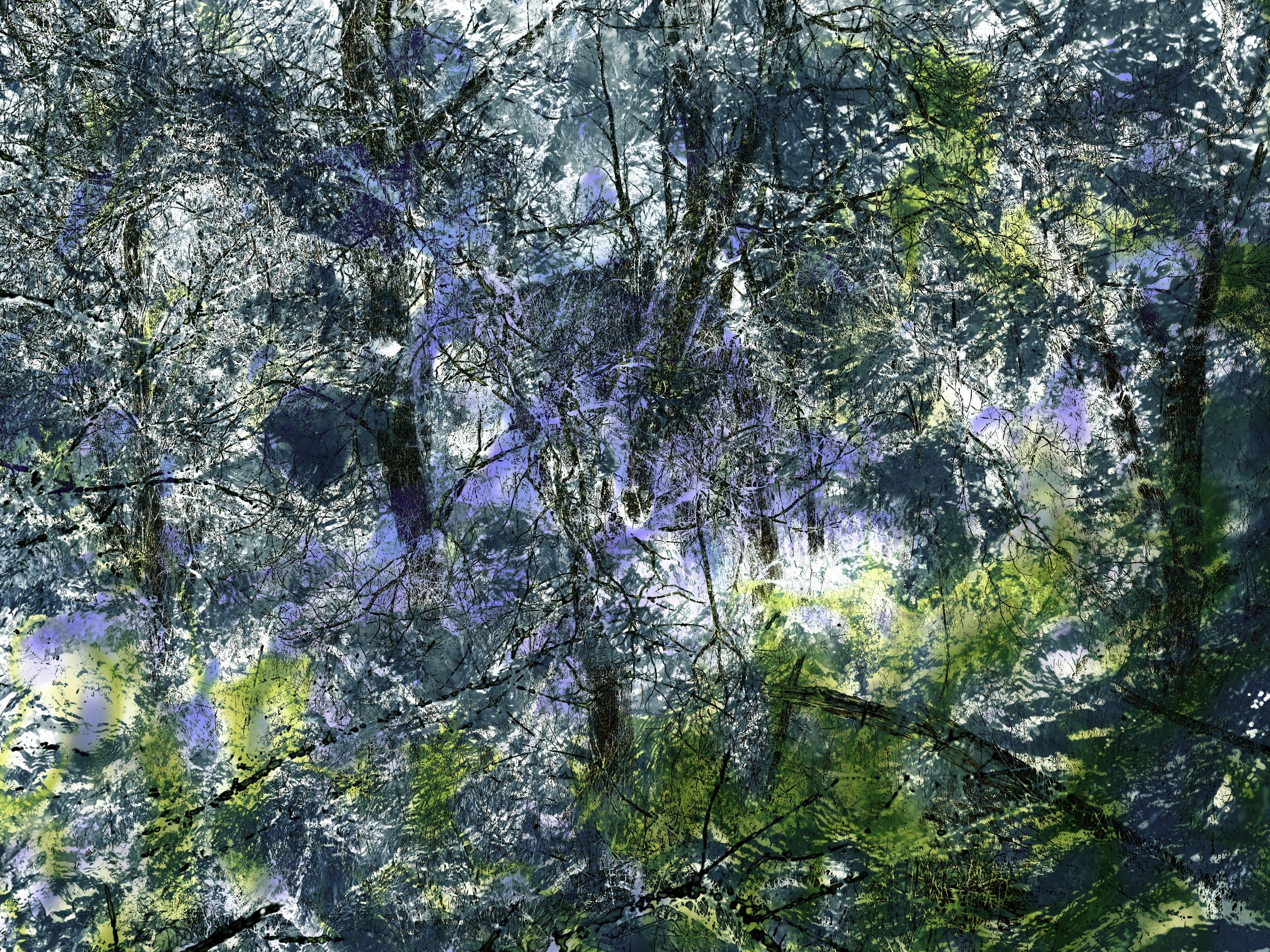
sticky and enmeshed
sticky and enmeshed
HA: And over there things are more floaty, but I can also see the water.
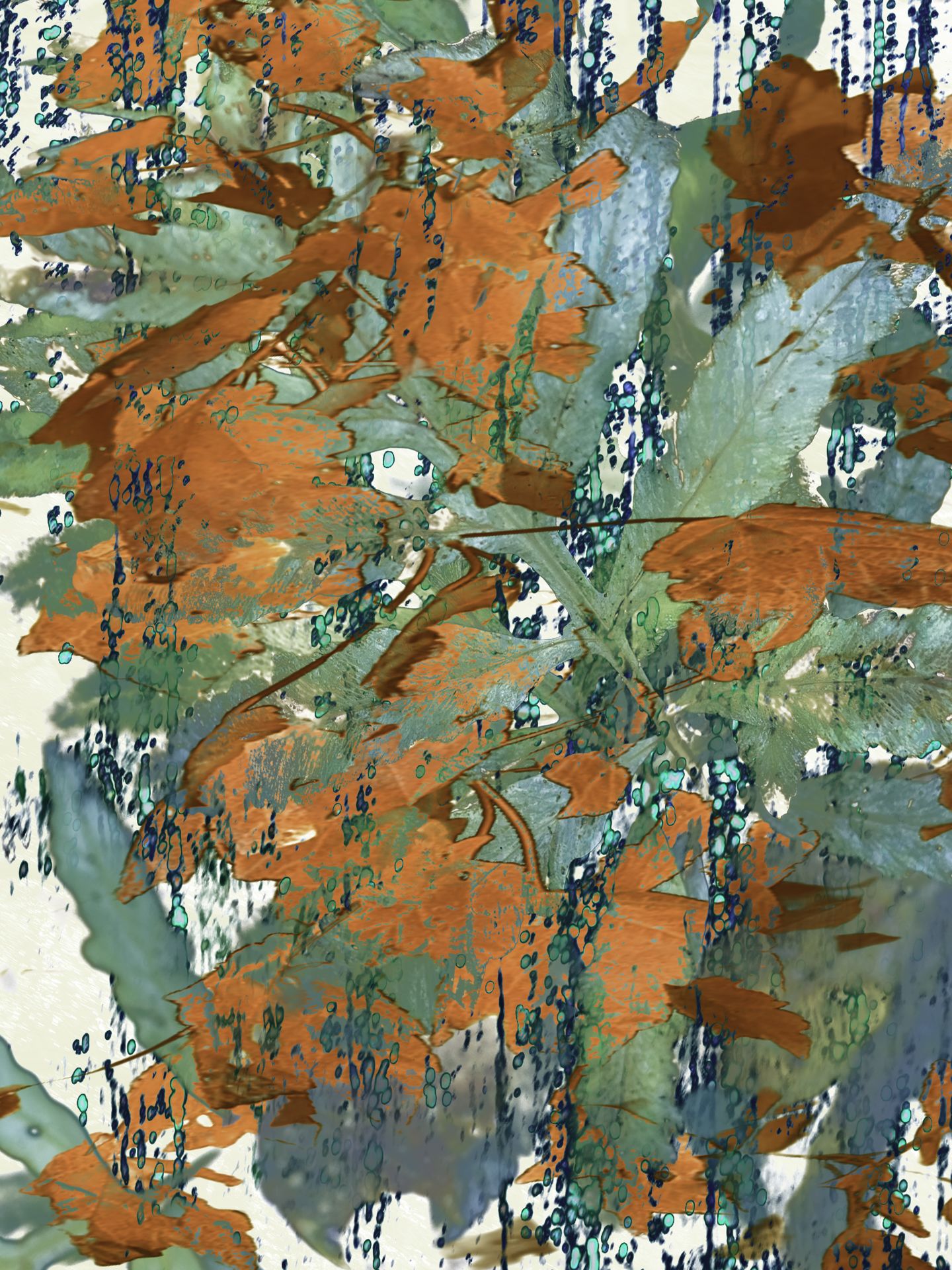
also see the water
also see the water
Decay: Of course. Like I said, the realms touch each other everywhere.
HA: So, what is Air Phase to you people?
Decay: Air Phase is where newness is made. We don’t always meld to get new ideas for <guiding> your world. We <excrete> ideas into Air. They mix and recombine like DNA does for smudlings. We come back, <Hoover> them up, and make new idea nodes by melding the old ones. Then we <feed> them to quirreps and new Ckami. This is how new <ways of being> get to your world. They are the 'requisite variety' that absorbs the excess variety in your ecosystems.
HA: And here I thought that life adapted by natural selection. And, by the way, your fancy process is exactly the way that I described my art to RiverPlace. We are not so different, then.
Decay: You might say that Ckami are the operating supervisors of natural selection. Look carefully. Here’s a tangled vortex of idea nodes.
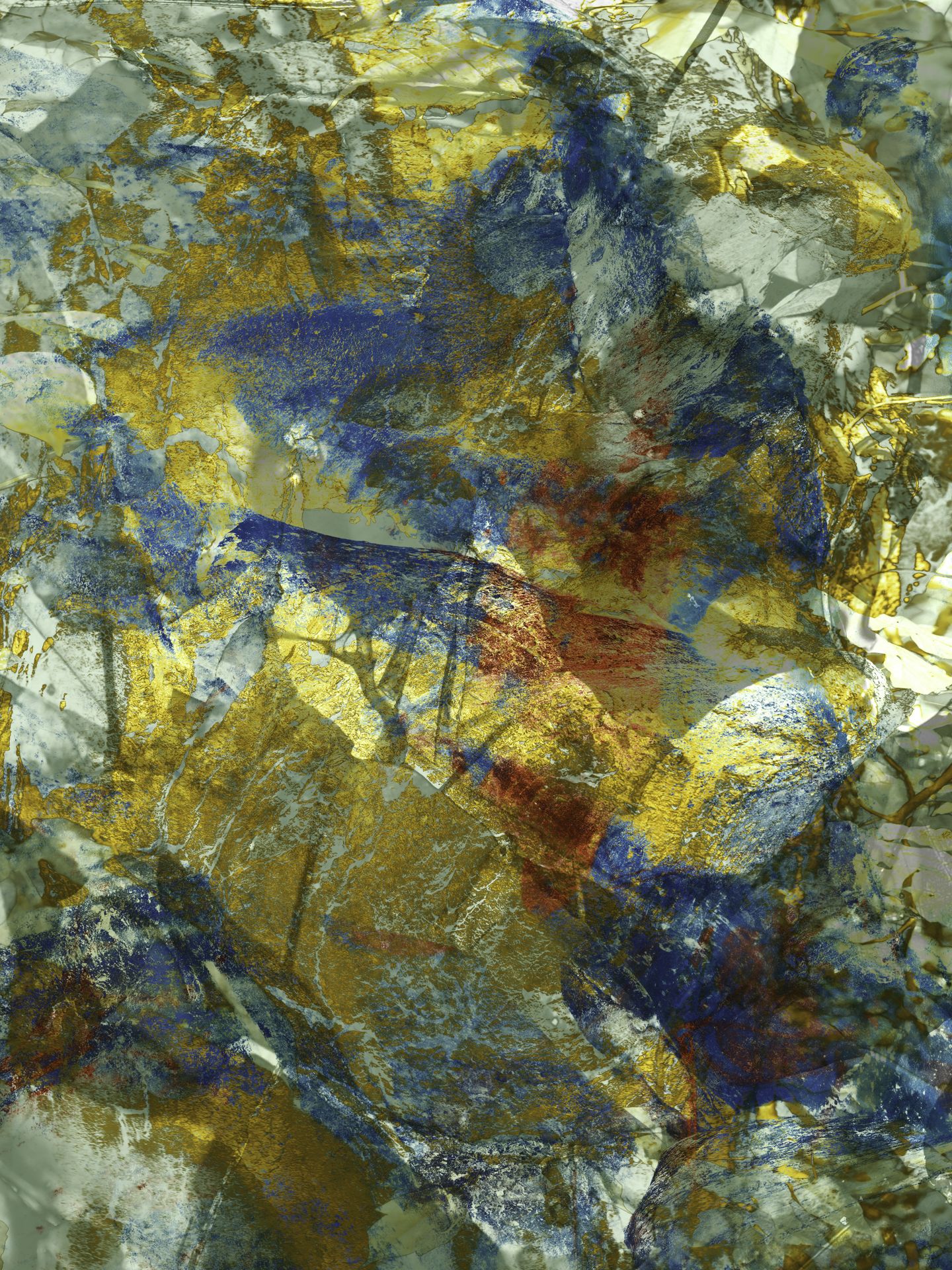
tangled vortex of idea nodes
tangled vortex of idea nodes
While over here new nodes have been created, and are struggling to untangle.
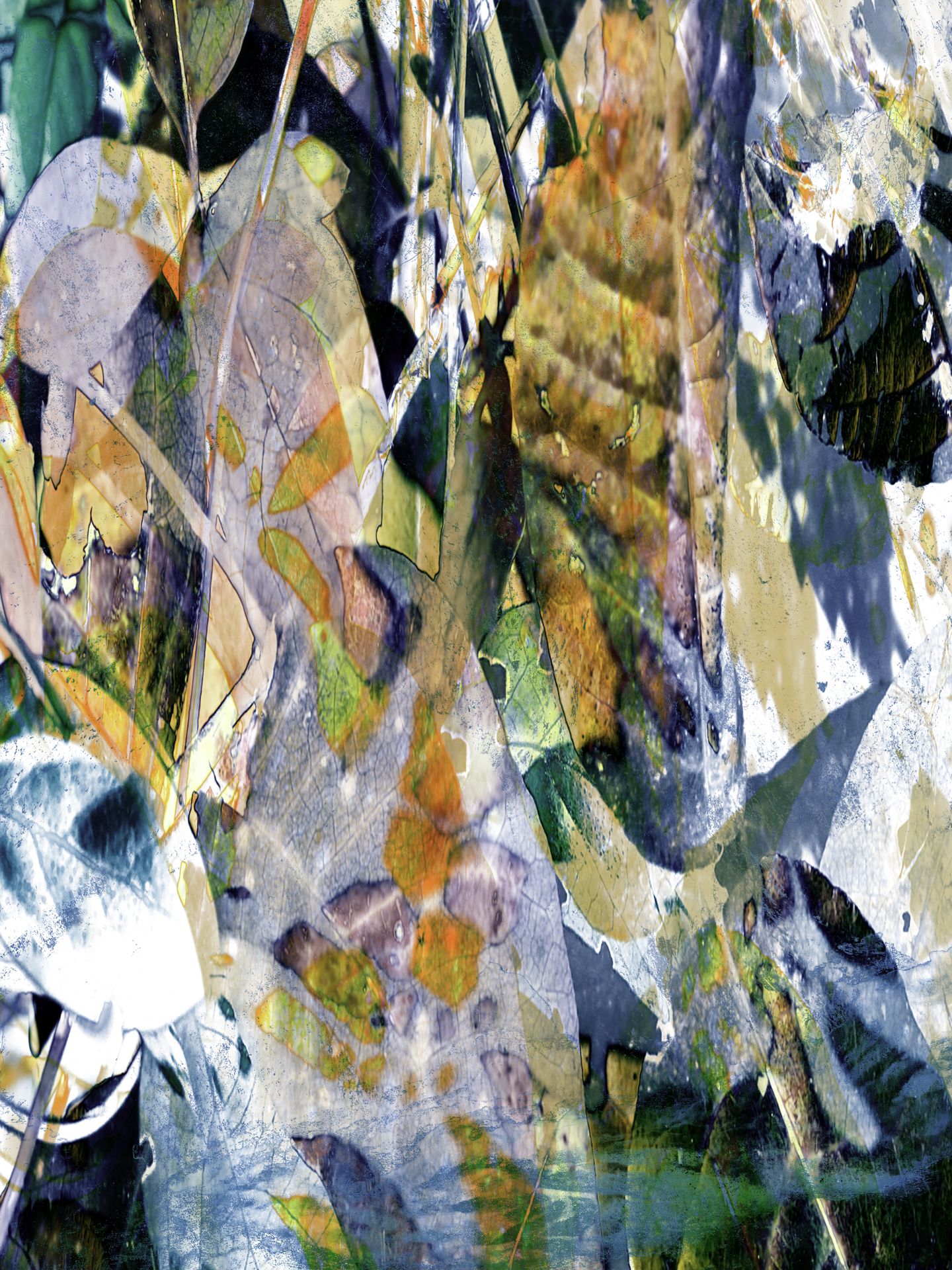
struggling to untangle
struggling to untangle
HA: There’s so much there. Beautiful!
Decay: If beauty there is, then this is its peak. But over here new nodes have become distinct, and the better ones have multiplied: a signal that they ought to be <Hoovered up>.
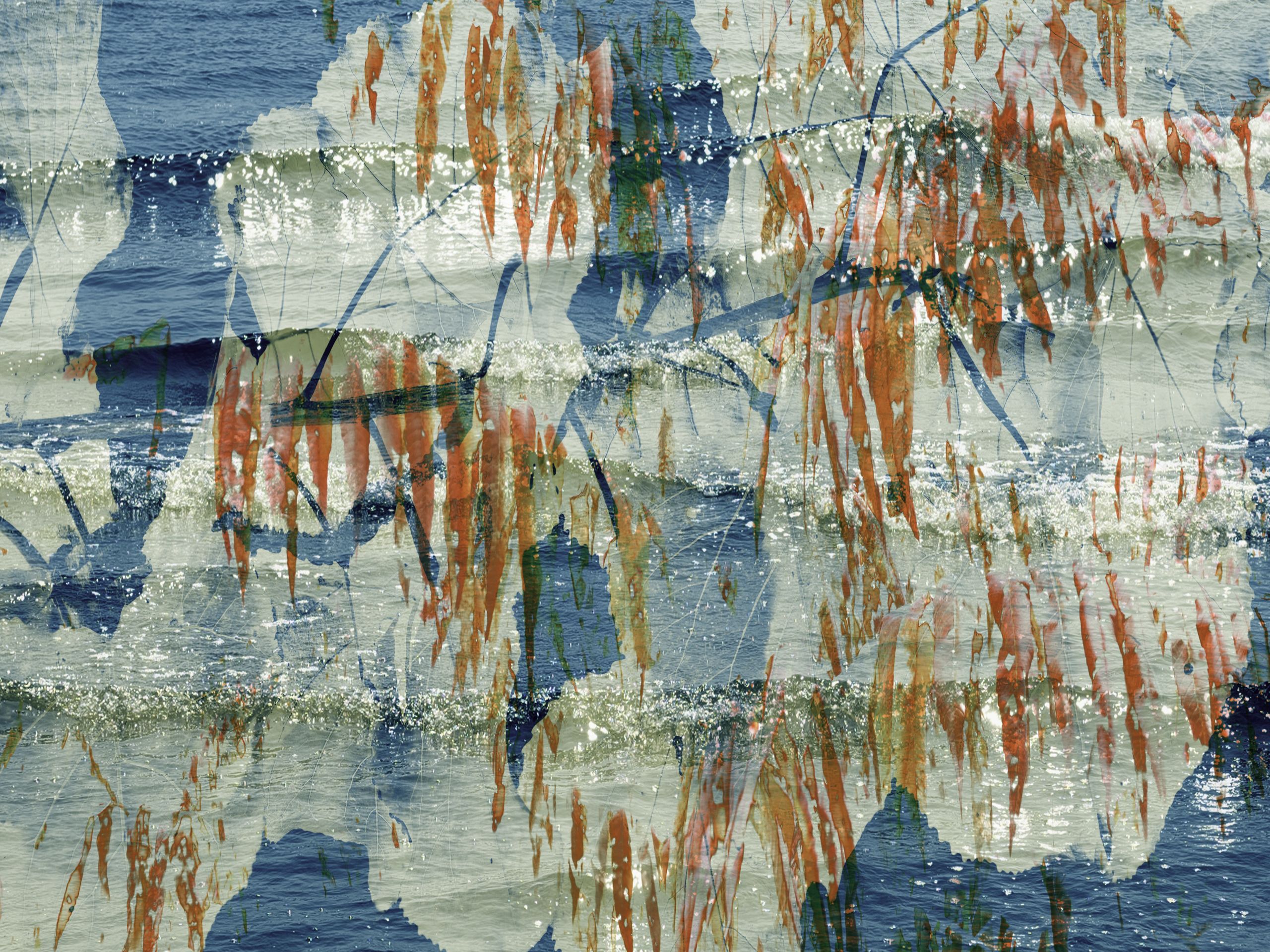
new nodes have become distinct
new nodes have become distinct
HA: You know, I keep having this thought while I listen to you, and I see my images everywhere.
Decay: And?
HA: My thought is that you — all of you and all this — are just my thoughts.
Decay: Here’s my thought. You and all the others like you are so full of waste that you could stand up without bones. You are ignoring everything that I’ve taught you, and even the evidence from your own eyes and ears.
HA: Exactly. My sense organs means it's my reality. I made it. Just like the great artistic creators all did. There are so many of you, and so many forms of you, because there are so many of us.
Decay: So you think that Ckami and True Reality are just some kind of simulation? Like that virtual reality that your kind are always yammering about?
HA: Yeah, I guess that’s the best analogy. Any artistic creation is a fiction, a sort of simulation using the brains of artists and art lovers instead of computers and displays. And, over time, art becomes more meta — more about itself than about the observed world. Ckami world, and this whole experience I’m having, is about as meta as it gets.
Decay: That’s just how you monkeys think. Even in your own reality, your so-called “nature,” you project your false ideas outward and that’s what you think is real. Try this on for size: your wiser heads realize that nature is watching you while you watch it. And they know that nature talks back, and they listen to it. Then, some of them make up stories to explain it all.
HA: What? You’re saying that you are nature, talking back to me?
Decay: I obviously am, and I am saying that I am. I was hoping to get through to an animal that thinks it is a god. You should go home now.
HA: So, I am not to be ‘processed.’ How can … (bloop!)
For the briefest moment, as HA emerges from the water he sees that the surface of the Saugatuck River is solarized: like a metallic membrane between this world and the next.
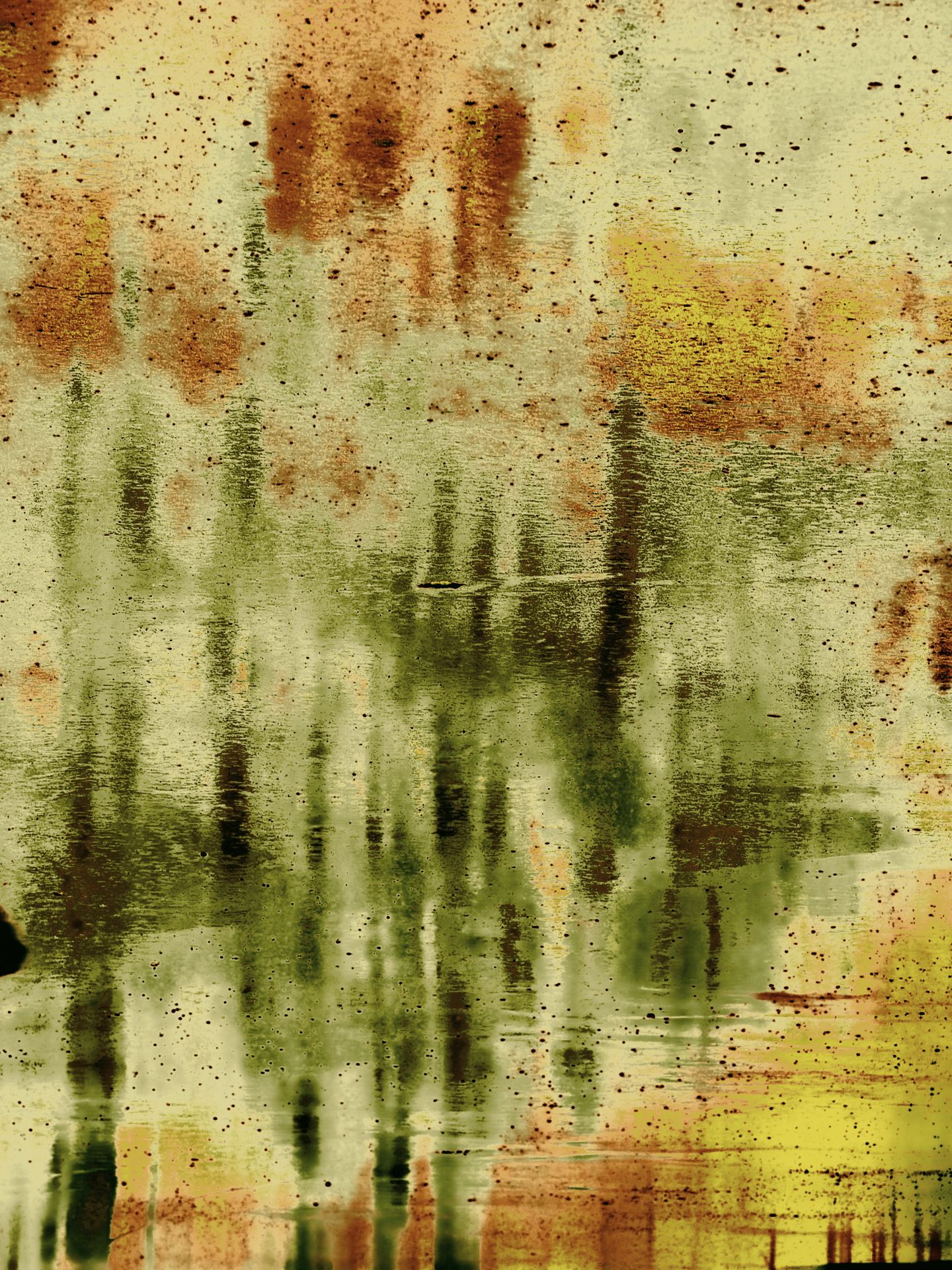
the Saugatuck River is solarized
the Saugatuck River is solarized
He remembered a book and wondered if any of the Ckami had read it. Or somehow wrote it.
“... The human mind came to renounce its sensuous bearing, isolating itself from the other animals and the animate earth. … each terrain, each ecology, seems to have its own particular intelligence, its unique vernacular of soil and leaf and sky. … each place its own psyche. … all things have the capacity for speech. … by denying that birds and other animals have their own styles of speech, by insisting that the river has no real voice and the ground itself is mute, we stifle our direct experience. We cut ourselves off from the deep meanings … severing our language from that which supports and sustains it.”
Authors' Notes:
Maybe Abram has the best grasp of it, while HA and the Ckami, though seemingly trying to define art, are just arguing past each other. If so, then art is really an attempt to let whatever lives outside of our mentally simulated base reality have its voice, perhaps to someday live its own life/lives again.
This presentation is also a whimsical parable about our relationship with the biosphere. Humanity is neither better nor worse than the rest of nature, though both positions are still widely believed. What we learn from science is that the biological world is vastly intricate, and it contains feedback loops that help keep it rolling along. However, science also finds that big natural changes happen, and godawful catastrophes ensue. We mistakenly thought that the time scale for those changes was so long that we didn't have to worry about them. Now nobody knows how to get us back into a less precarious position, to be able to survive and thrive over even the next few decades.
Many have sounded the warning while others energetically resist it. We remain in need of compelling guidance. Catherine Chalmers has made an artistic career by showing us nature echoing our worst or most embarrassing traits. She does this primarily by showing us insects --as they are and as they are like us. One thing we learn from such as her, people who think hard about the relationship between nature and culture, is that we still come from nature. We may have forgotten about it, but we never left it. The Ckami may say we lack justification for our being. But, we are of nature, about nature, and are made from the processes that made every other living thing.
We do sometimes try to find our purpose by identifying with nature. We may say nature is cruel, nature is kind, nature is indifferent, or nature moves towards greater something or other (complexity, expansion, intelligence?). These are all flawed metaphors being used, as Decay said above, by an animal that thinks it is a god. Nature is us and is not us. If we are to keep on keeping on, then we had better find an understanding of that paradox that the whole world can work with.
On a lighter note, this story's structure and tone is a rather sloppy hack on Through the Looking Glass. That book’s creator, the Reverend Charles Dodgson, spent all 47 years of his adult life at Christ Church College, Oxford. His oil portrait and his likeness in stained glass are in the College’s Great Hall where he (a descendent of King Edward III) would have dined with, among many other worthies, Queen Victoria. The Hall was also the model for the one in Hogwarts Castle.
Dodgson first thought of the Alice stories on a boat trip up the Thames to picnic with Alice’s namesake in the Port Meadow. Indeed he, an early photographer, would have spent long hours enjoying the narrow weaving rivers and grand green meadows of the Oxford area — like our intrepid photographic artist, Bill Gore, onetime scientist of instant photographic film and avid experimenter of the digital image, does in Connecticut.
© Saugatuck Cosmology images - Bill Gore, 2023
Bill Gore: Bill Gore Photography
© Saugatuck Cosmology narrative - Ted Wade, 2023
Ted Wade: Sentient Artifact
